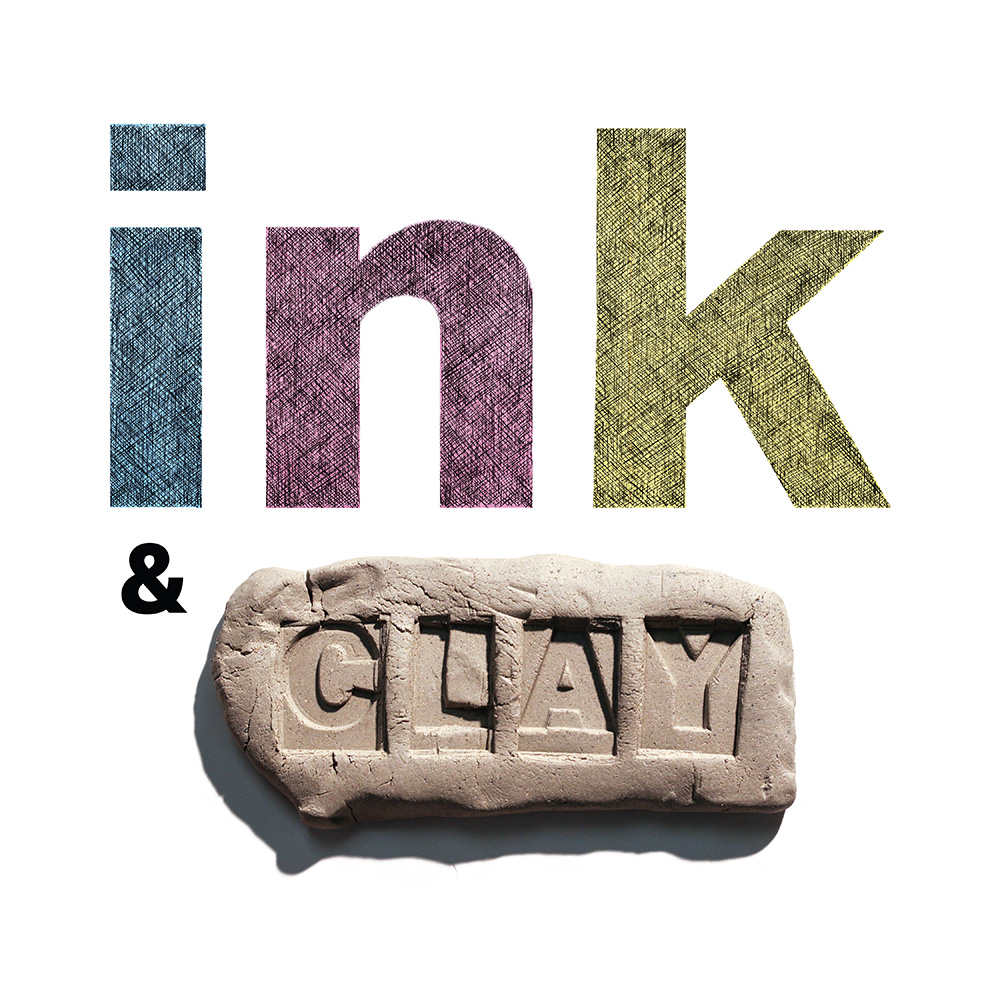2020-2021 Exhibitions
Fall Semester, 2020
Large Print
August-September, 2020
This exhibition displays some of the largest works in the Turner collection.
Q&A with artist Florin Hategan
September 15, 4:00 PM ( Zoom, register here)
A conversation with Toronto-based printmaker Florin Hategan, whose work was featured in Florin Hategan: Solo 11th Turner National Print Competition Award (2018). Two of Hategan’s handprinted linocuts are included in Large Print, and the Q&A will provide a chance to learn about his process and current projects. Florin Hategan was selected for the solo exhibition prize from the 11th Turner National Print Competition and exhibited Fragmenturalism at the Turner in Spring 2018. Hategan’s work has been featured in numerous solo and juried exhibitions in North America, Europe, and Asia. Originally from Timisoara, Romania, Hategan moved to Canada in 1994. He received a MA degree in Civil Engineering, and his BA in Fine Arts from the University of Timisoara, Romania.
Exhibition Talk: Kelly Lindner, “S, L, XL: Mining the Artistic Potential of Scale"
September 22, 5:30 PM
Kelly Lindner is the newly appointed Galleries and Collections Curator for the University Galleries at Sacramento State. She oversees exhibitions and public programs for the University Library Gallery, the Robert Else and the R.W. & Joyce Witt Galleries. She also manages the art collection for the university. Prior to her arrival at CSU Sacramento, Lindner was director/curator for the Jacki Headley University Art Gallery at California State University, Chico. Lindner’s curatorial practice is predicated on interdisciplinary approaches, collaboration, and site-responsive explorations in contemporary art. During her tenure at Chico State, she organized over twenty solo and group exhibitions including Legal Gender: The Art of Anita Steckel, Aksum Belle: Afterwards with the work of indigenous artist Jacob Meders, and Two Truths and a Lie featuring the photo-based works of Weegee, Zoe Crosher, and Jessamyn Lovell. As an independent curator from 2009-2014, Lindner organized exhibitions for the Chico Museum, Chico and the San Francisco Arts Commission and was also the collections manager for the Artist Legacy’s Foundation in Oakland, CA and the Estate of Robert Arneson, Benicia, CA. From 2002-
2008, she was the director of the George Adams Gallery, New York and produced over 40 exhibitions by represented artists. Lindner received her MA in Curatorial Studies from the Center for Curatorial Studies at Bard College, Annandale-on-Hudson, NY and her BA in History from Smith College, Northampton, MA
Q&A with artist Summer Ventis
September 29, 3:00 PM
A conversation with CSU, Sacramento professor of printmaking, Summer Ventis. Large Print features two three- dimensional pieces by Ventis (generously loaned by the artist), monotypes from woodblocks with support structure, which add a compelling sculptural component to the exhibition.
Summer Ventis received her BA in Art from Grinnell College in 2002, and her MFA in Printmaking from the University of Colorado, Boulder in 2012. She is currently an assistant professor in the Art Department at California State University, Sacramento, where she runs the printmaking program. Her work is included in many collections including the Denver Art Museum, Southern Graphics Council International Archives, the Schneider Museum of Art, and university art collections in the US, Australia and New Zealand. Ventis served as juror and guest artist for the 24th Juried Student Print Exhibition at the Janet Turner Print Museum in 2019.
Celebrating Wayne Thiebaud
October-November, 2020
The influential California artist Wayne Thiebaud turns 100 on November 15 th. This exhibition examines the artistry of Thiebaud and his circle, including Richard Diebenkorn and Roy De Forest.
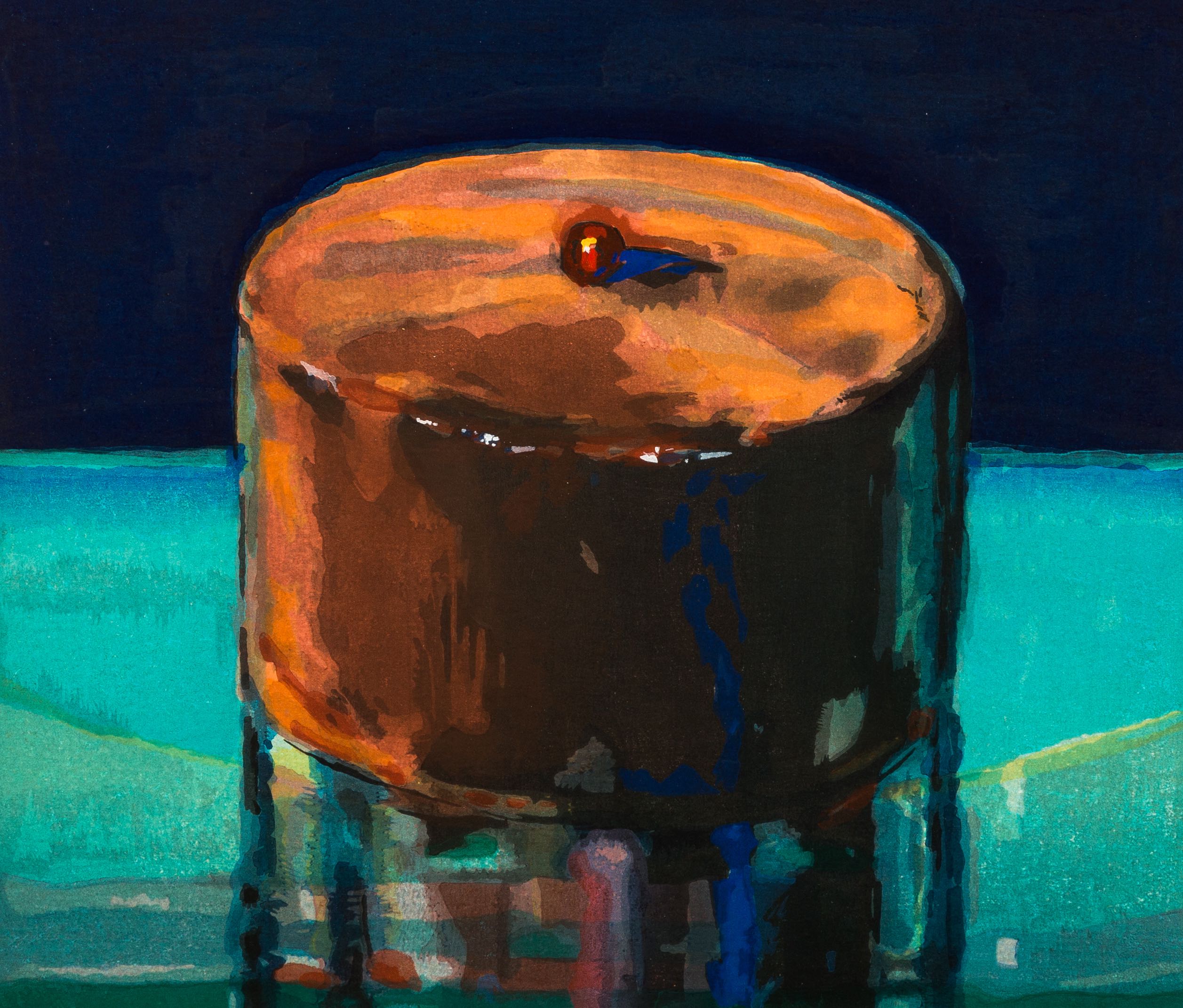
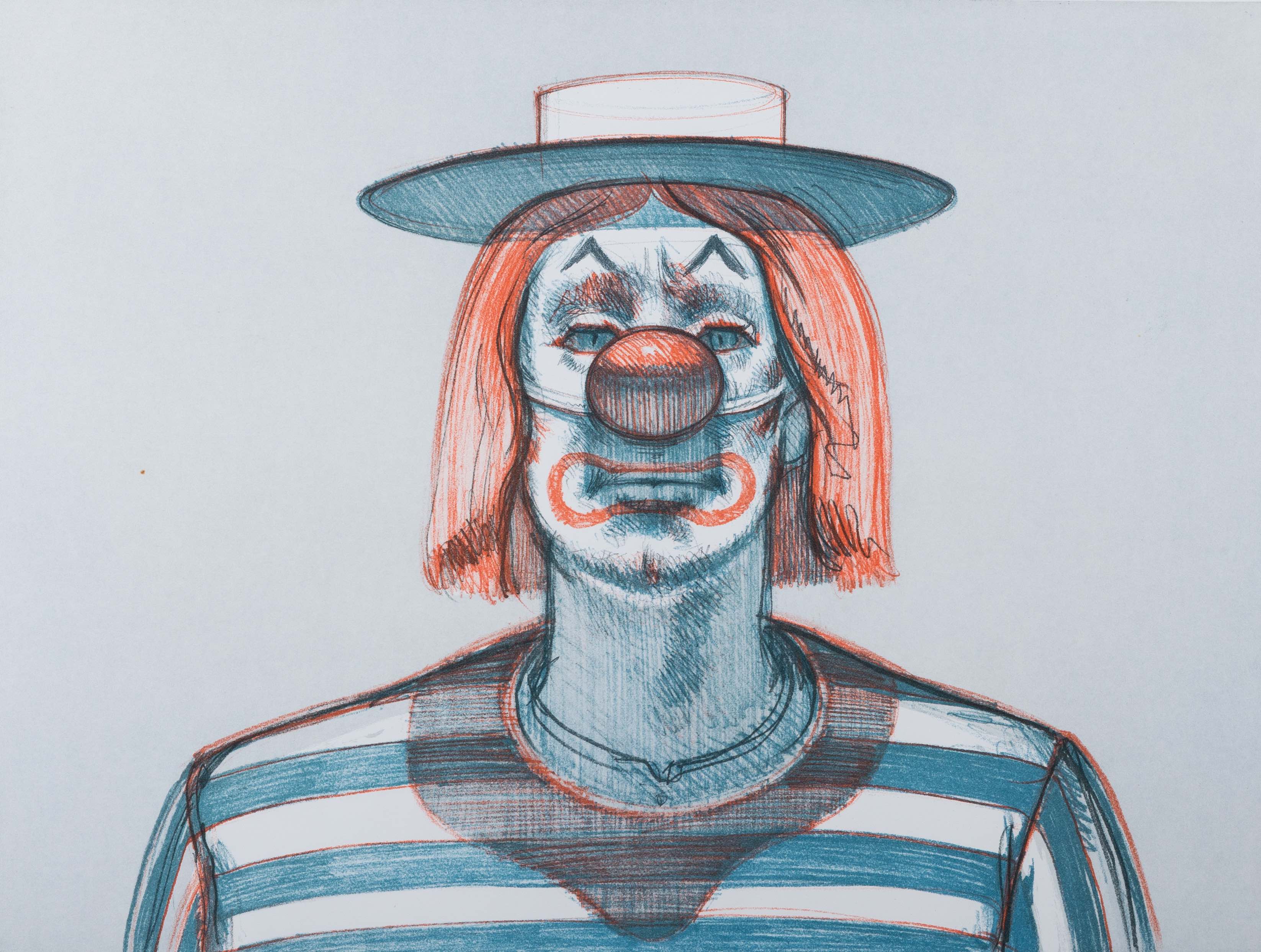 <
<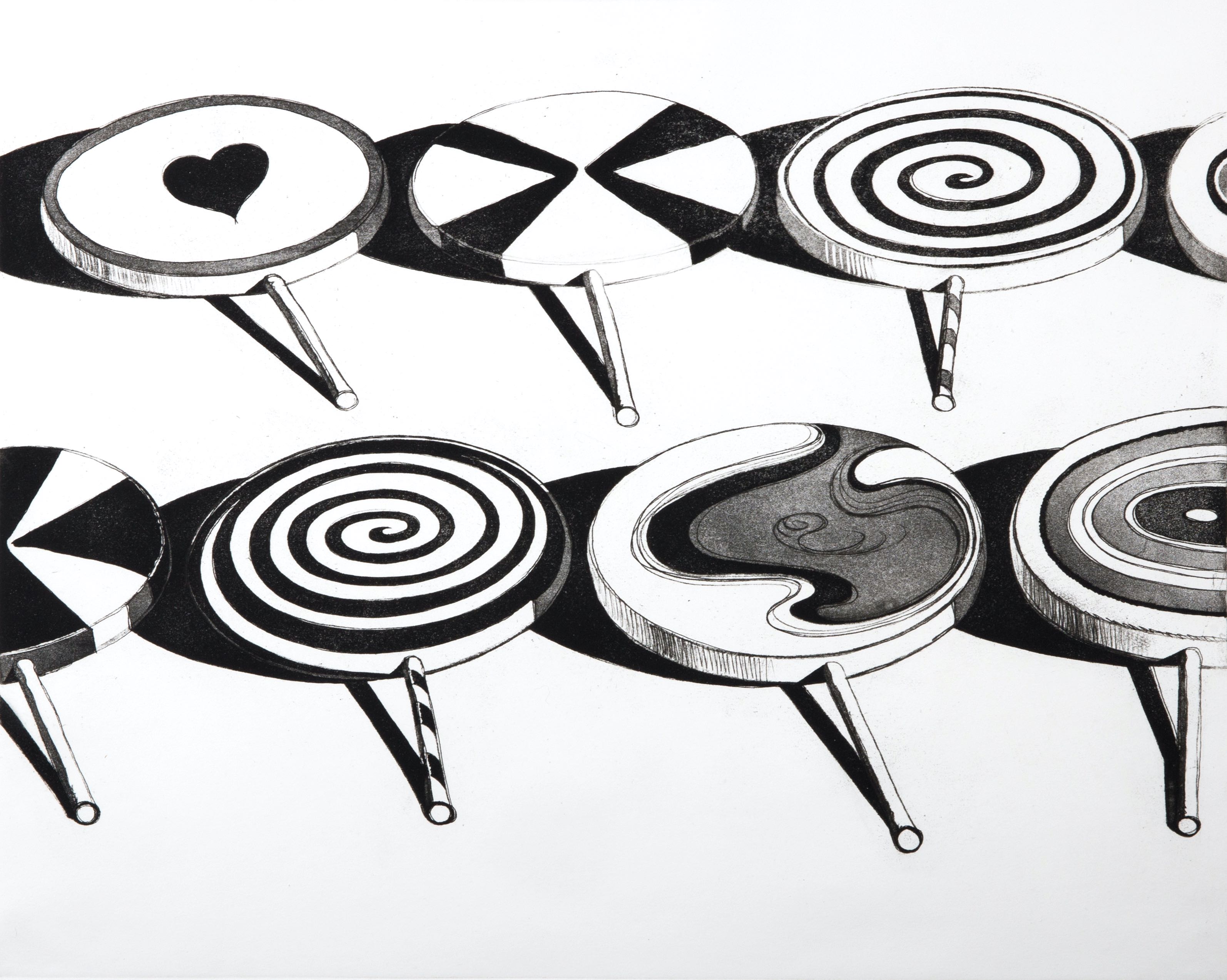
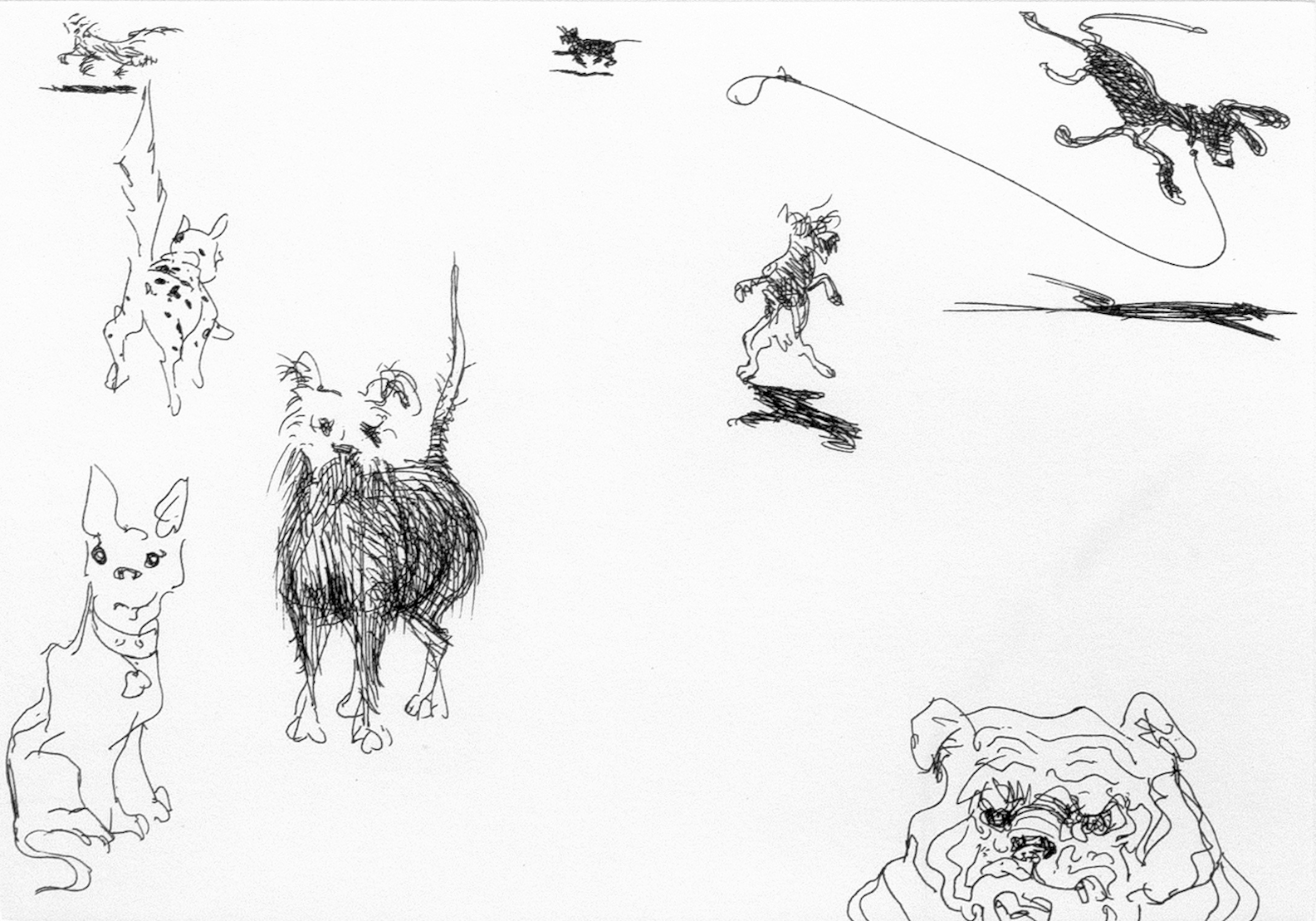
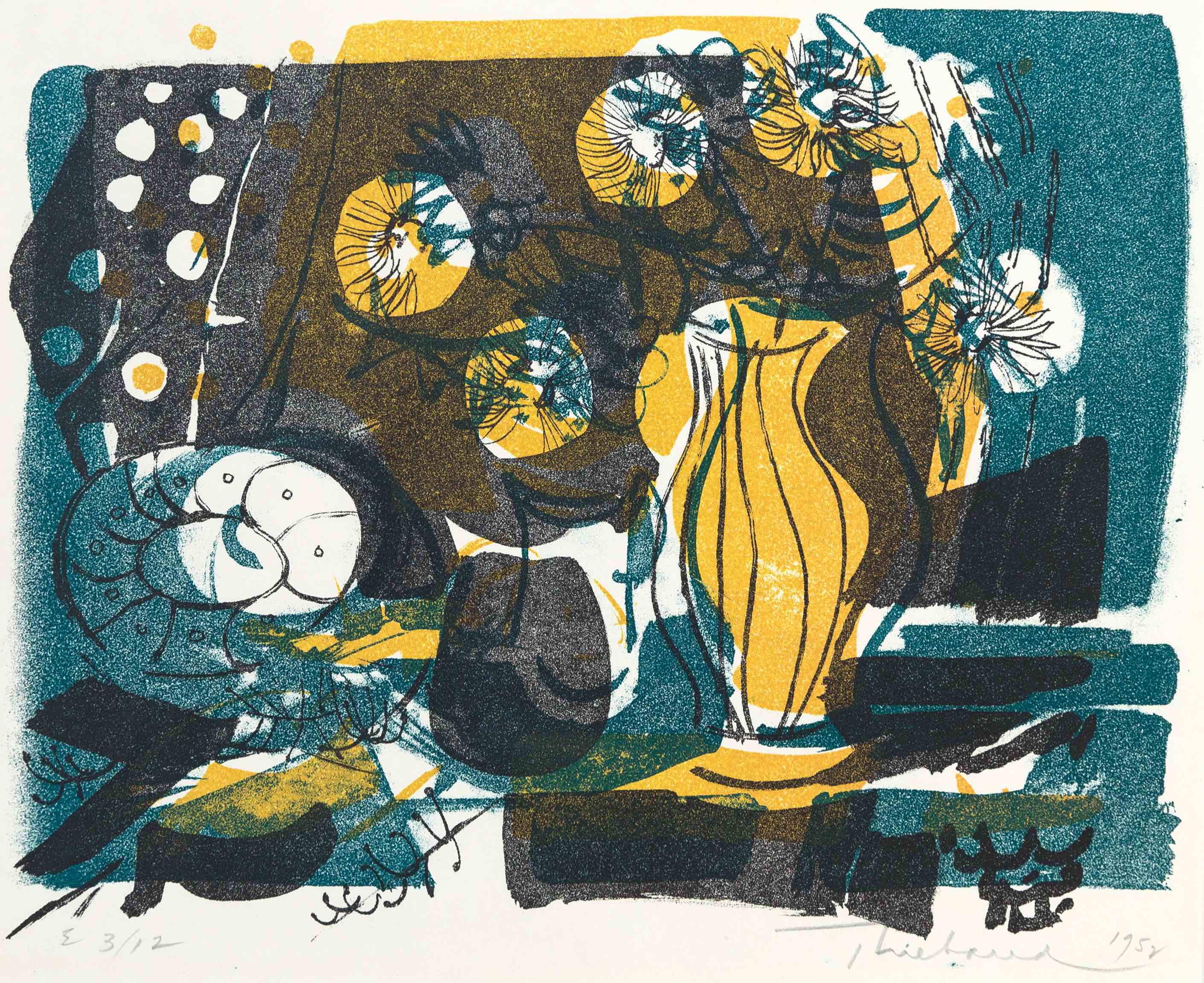
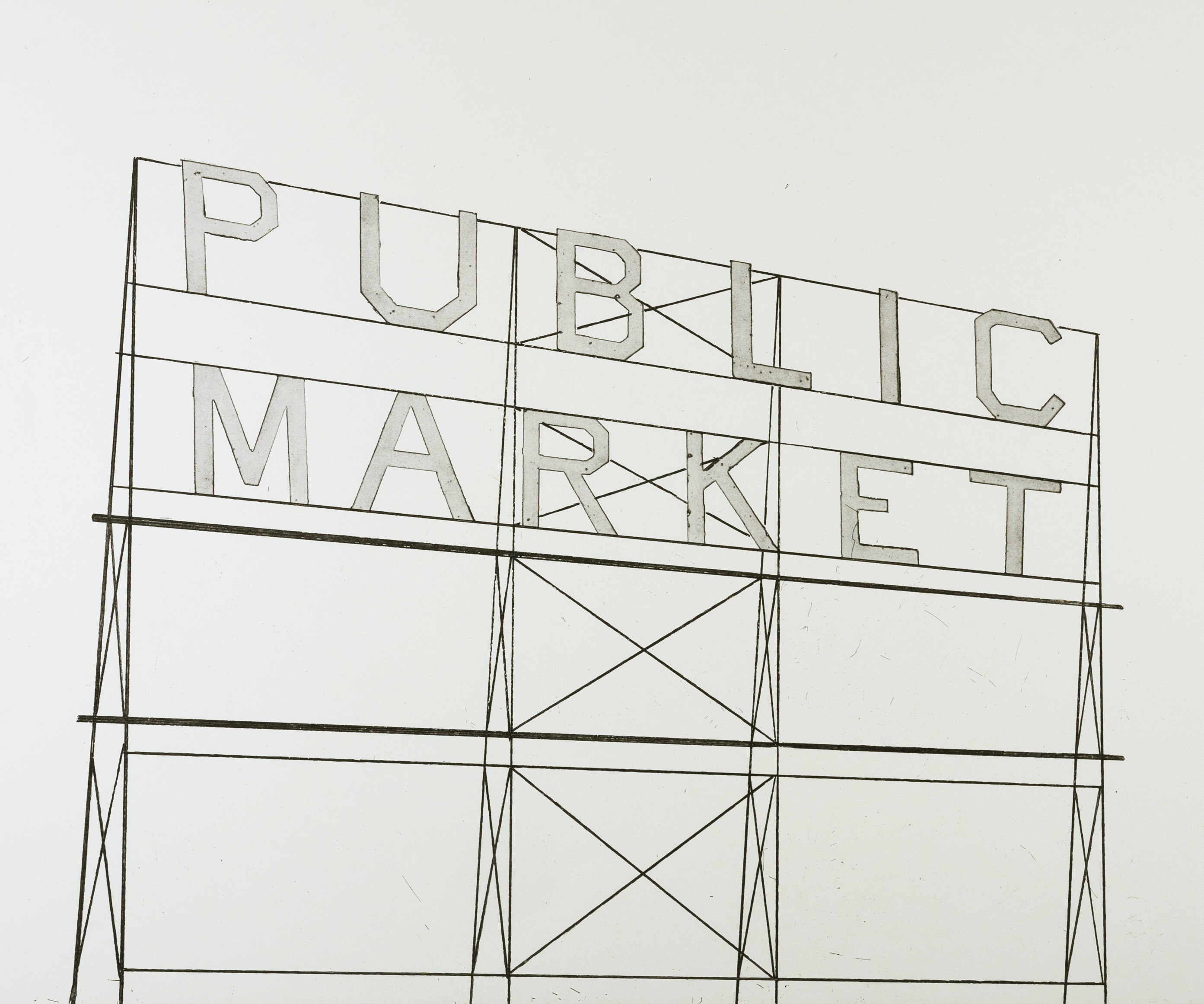
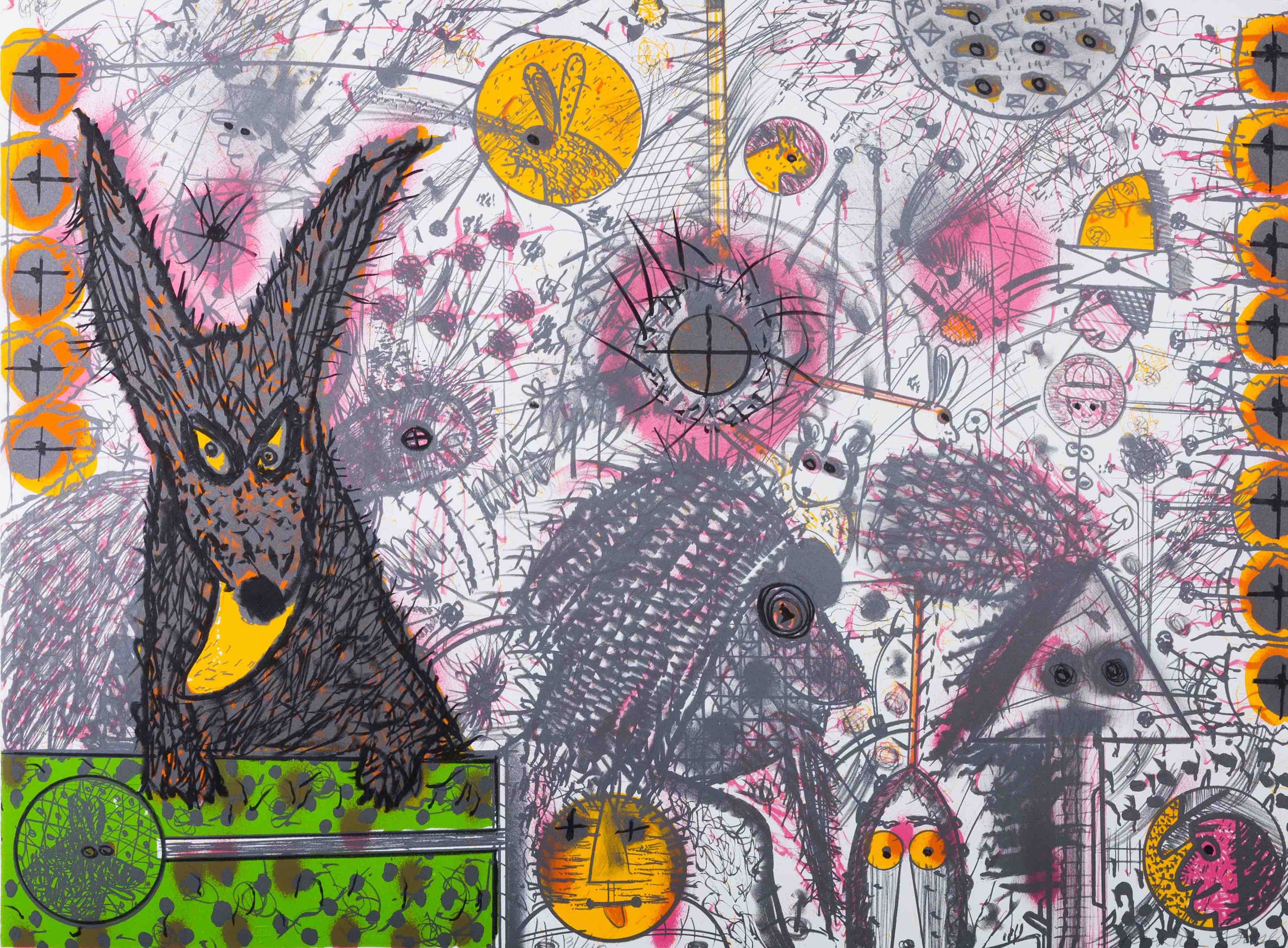
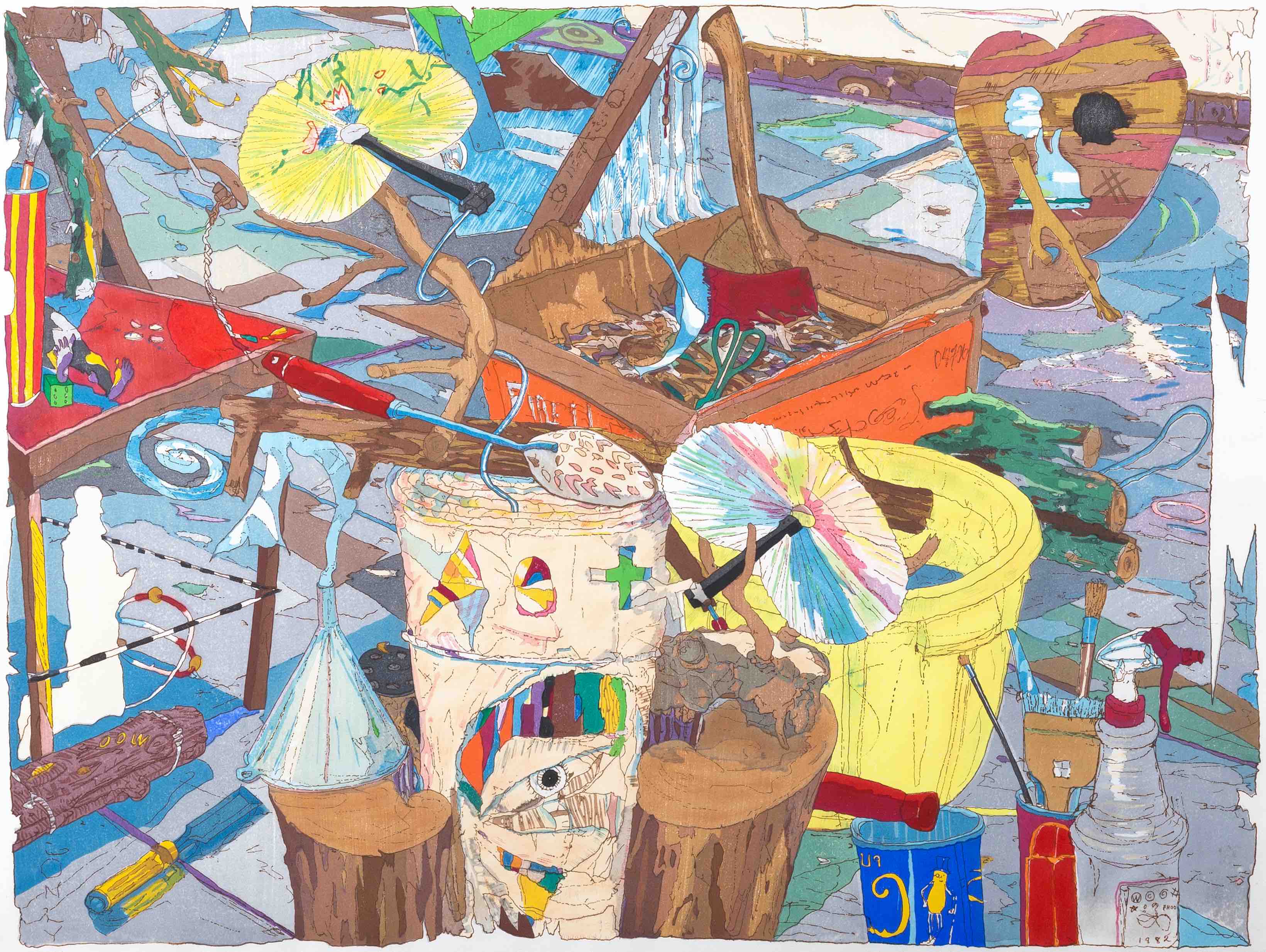
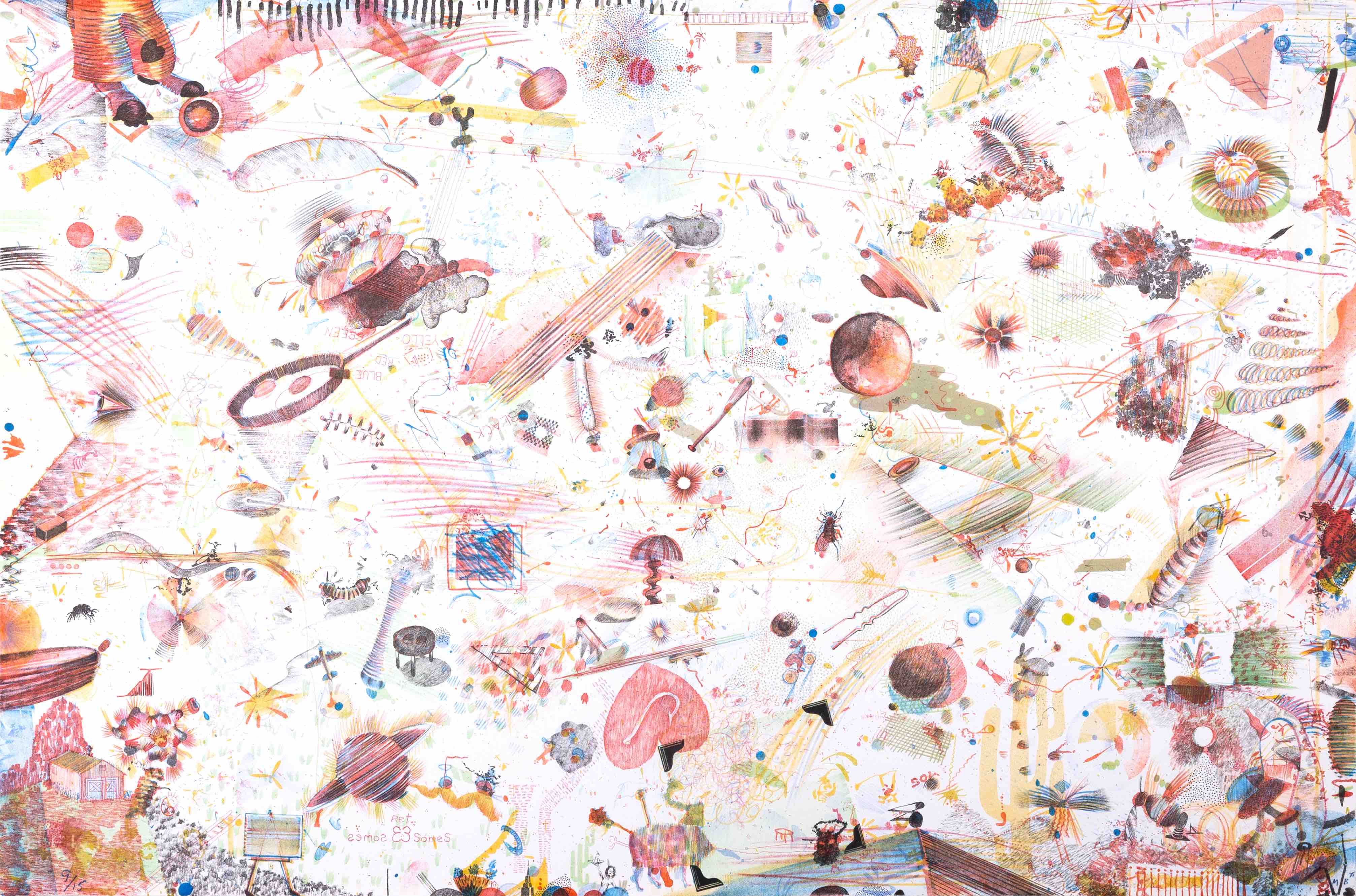
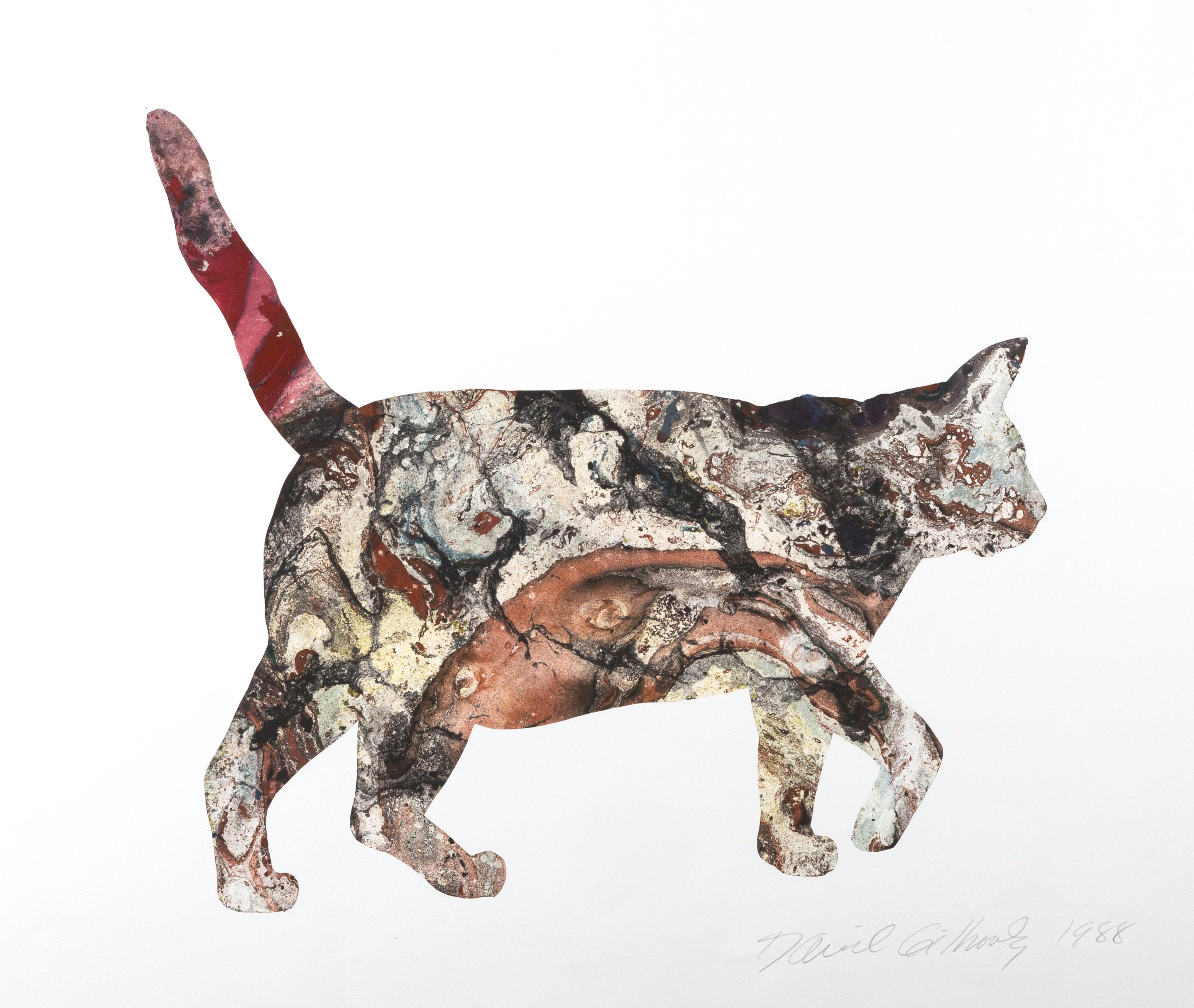
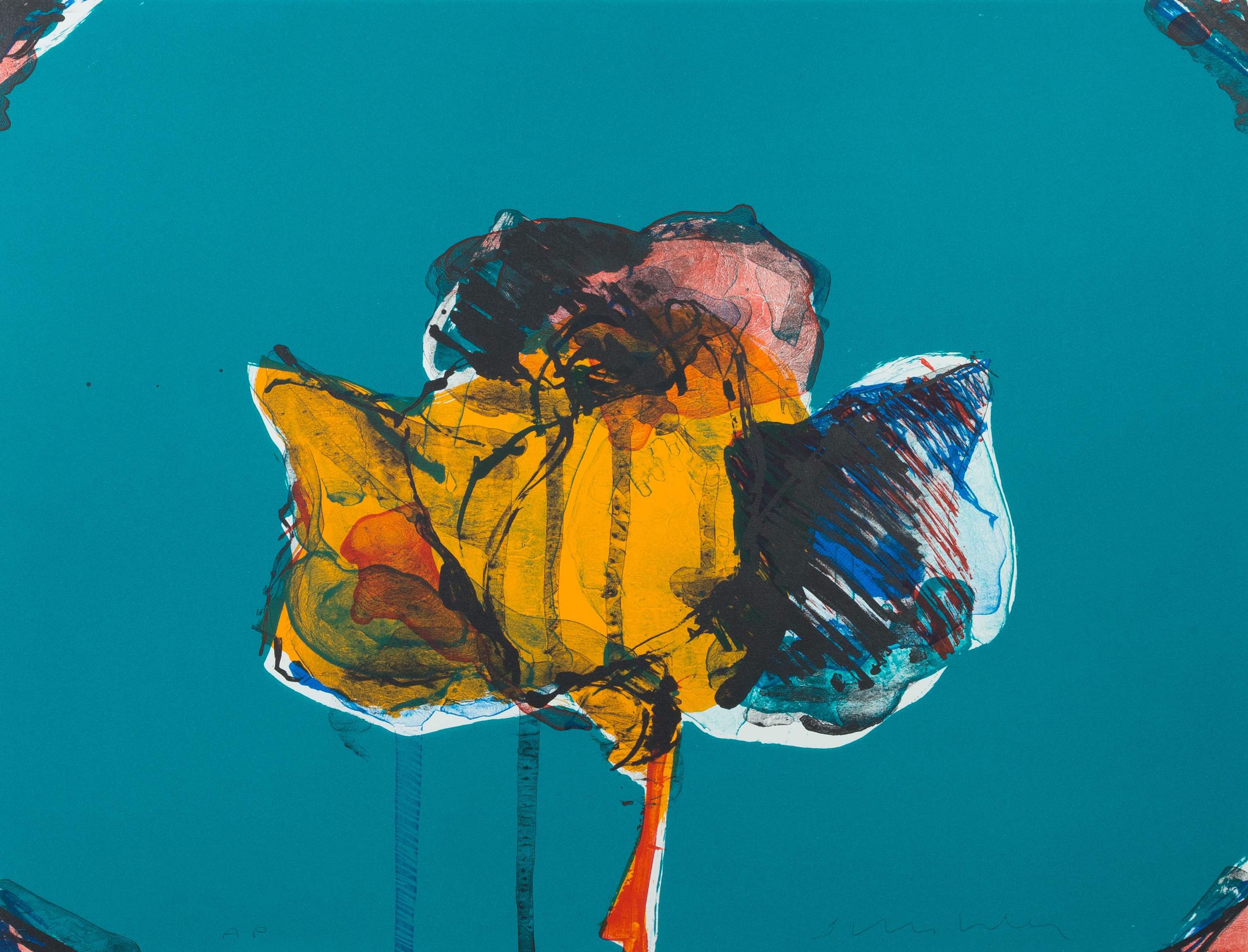
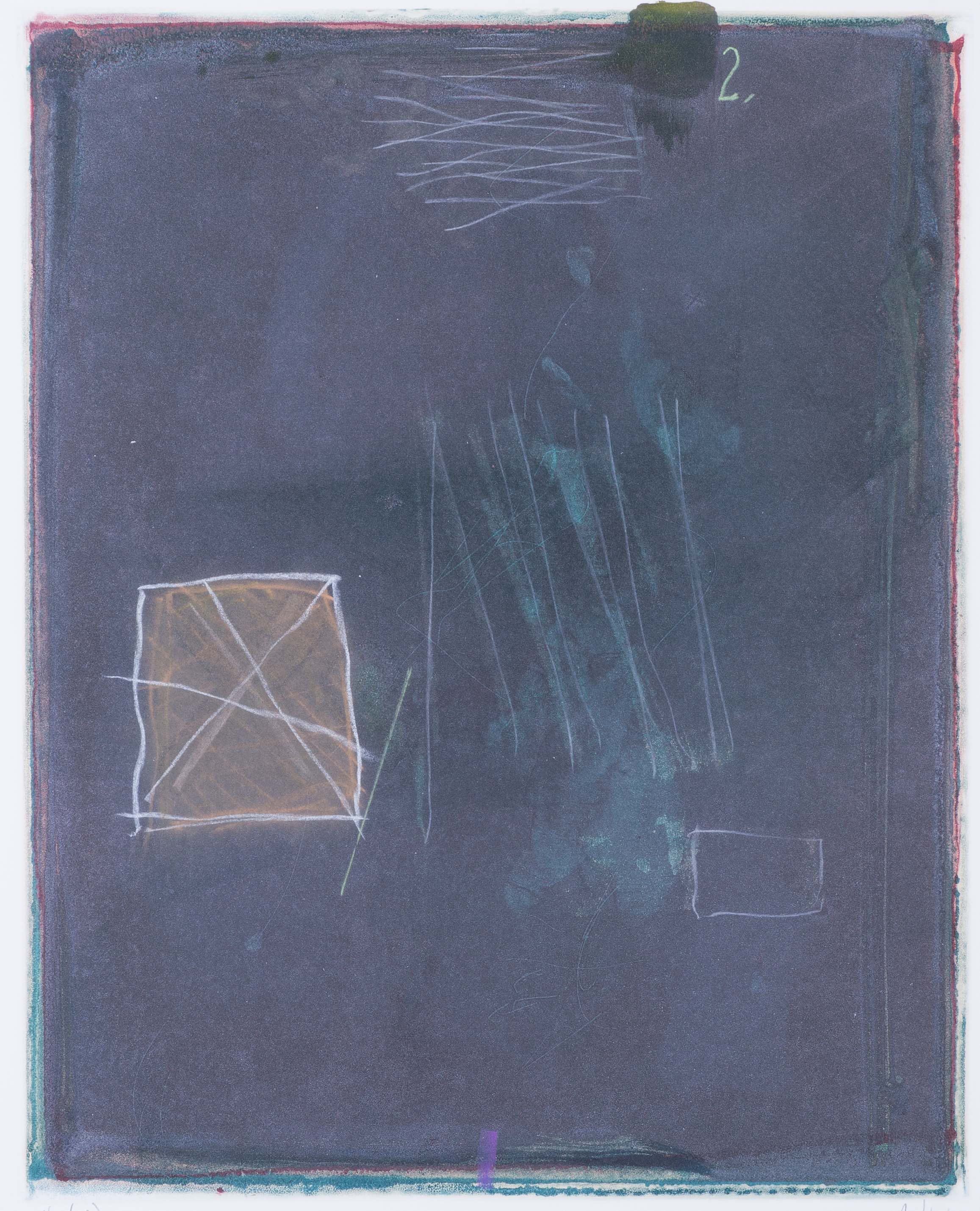
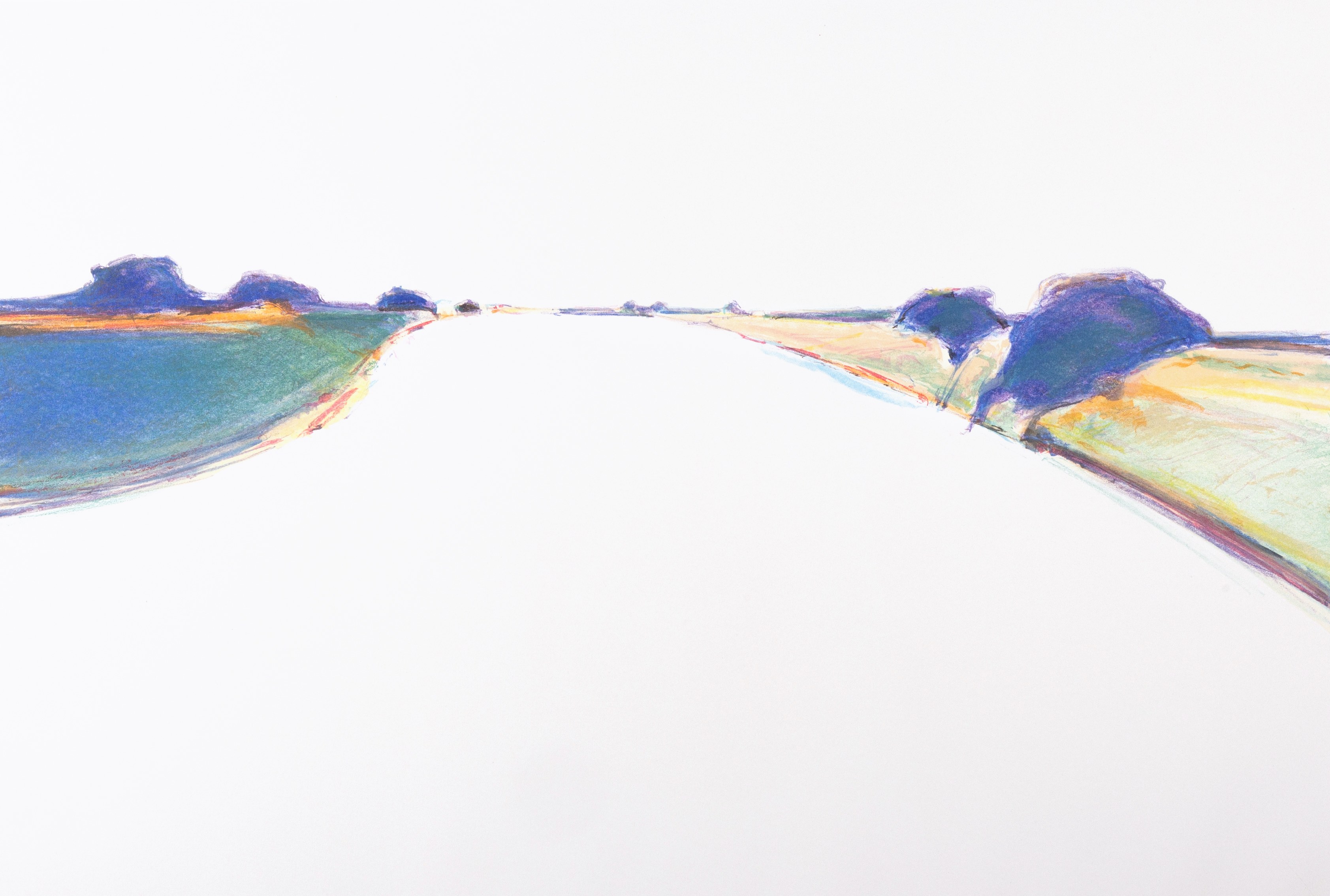
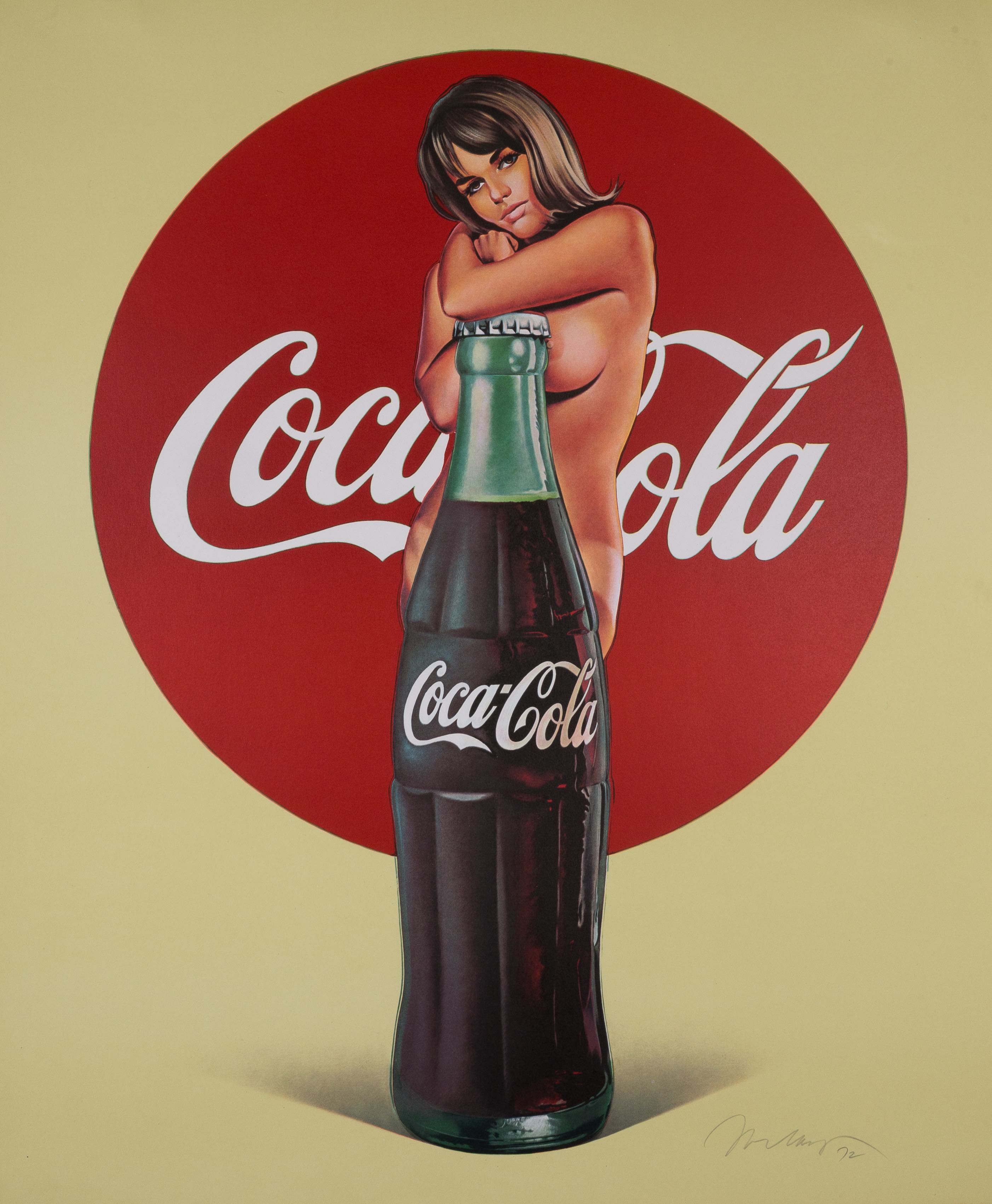
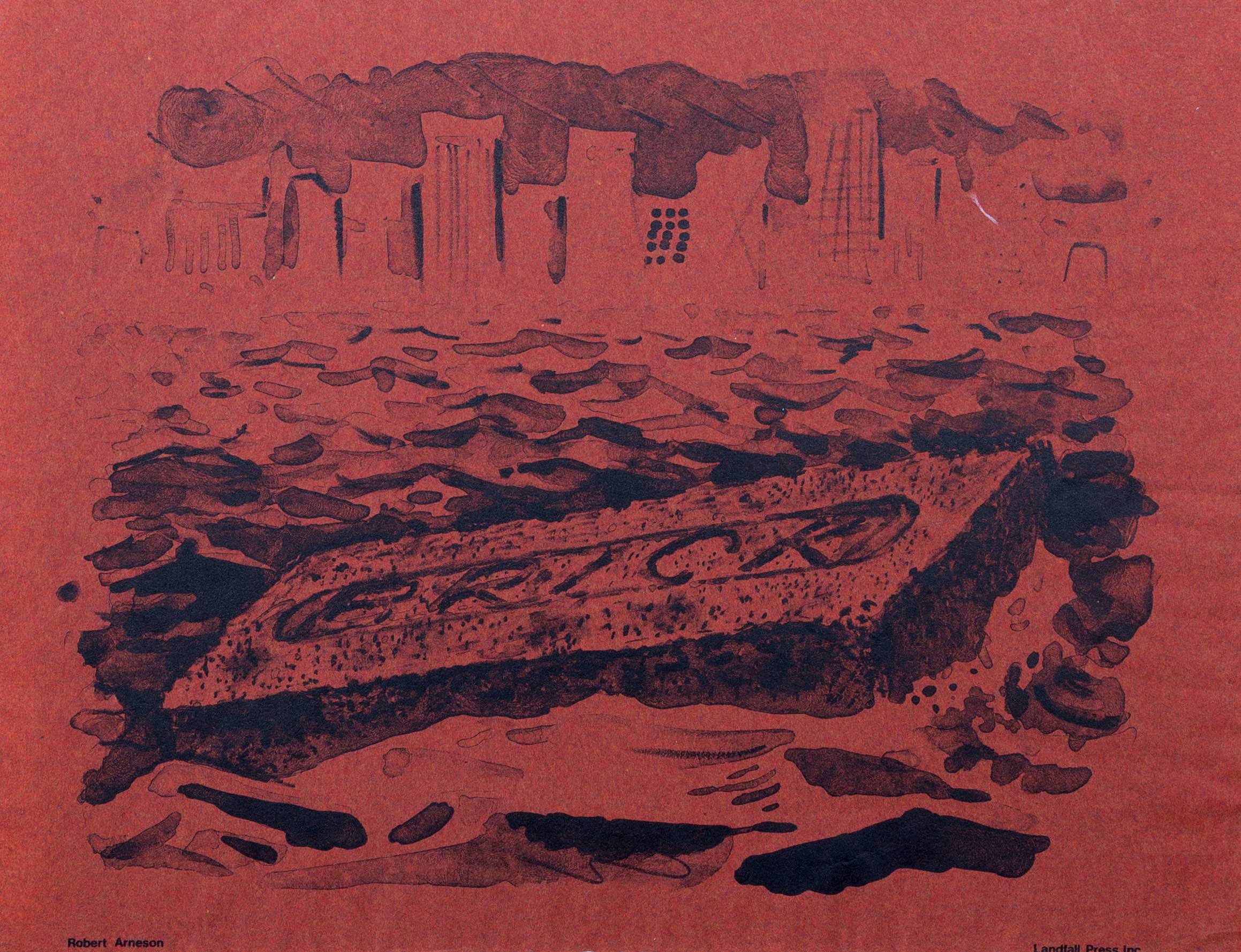
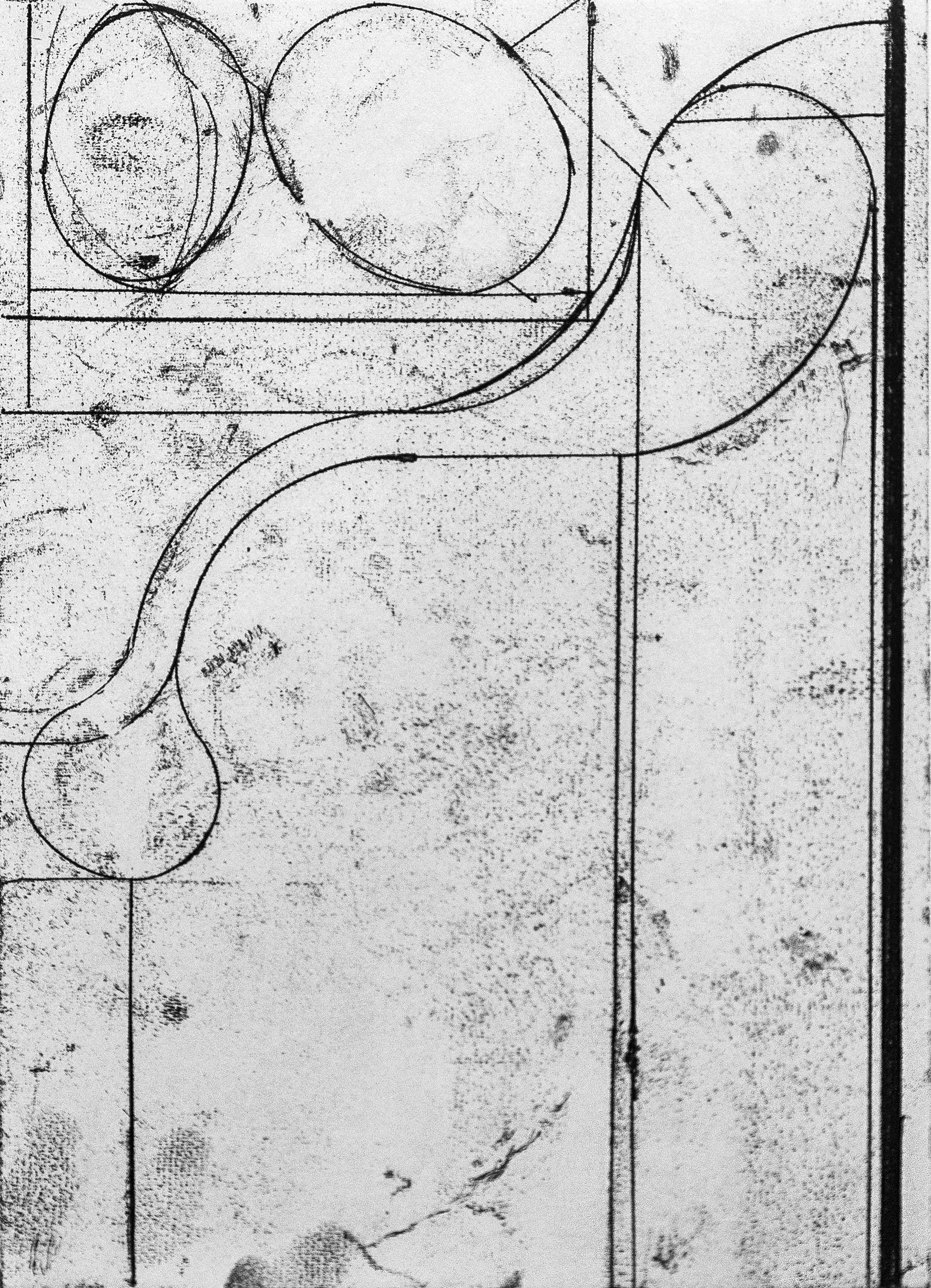
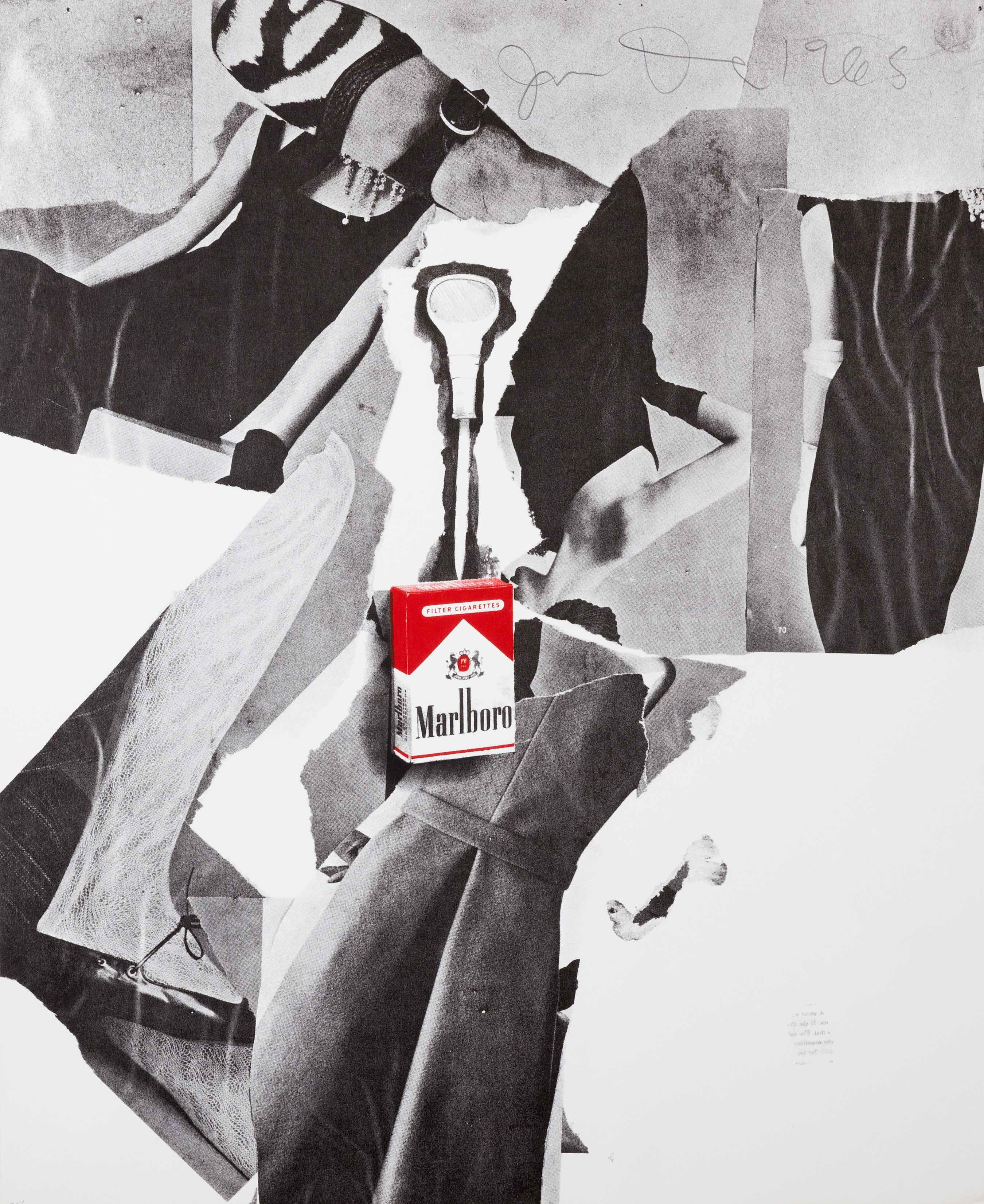
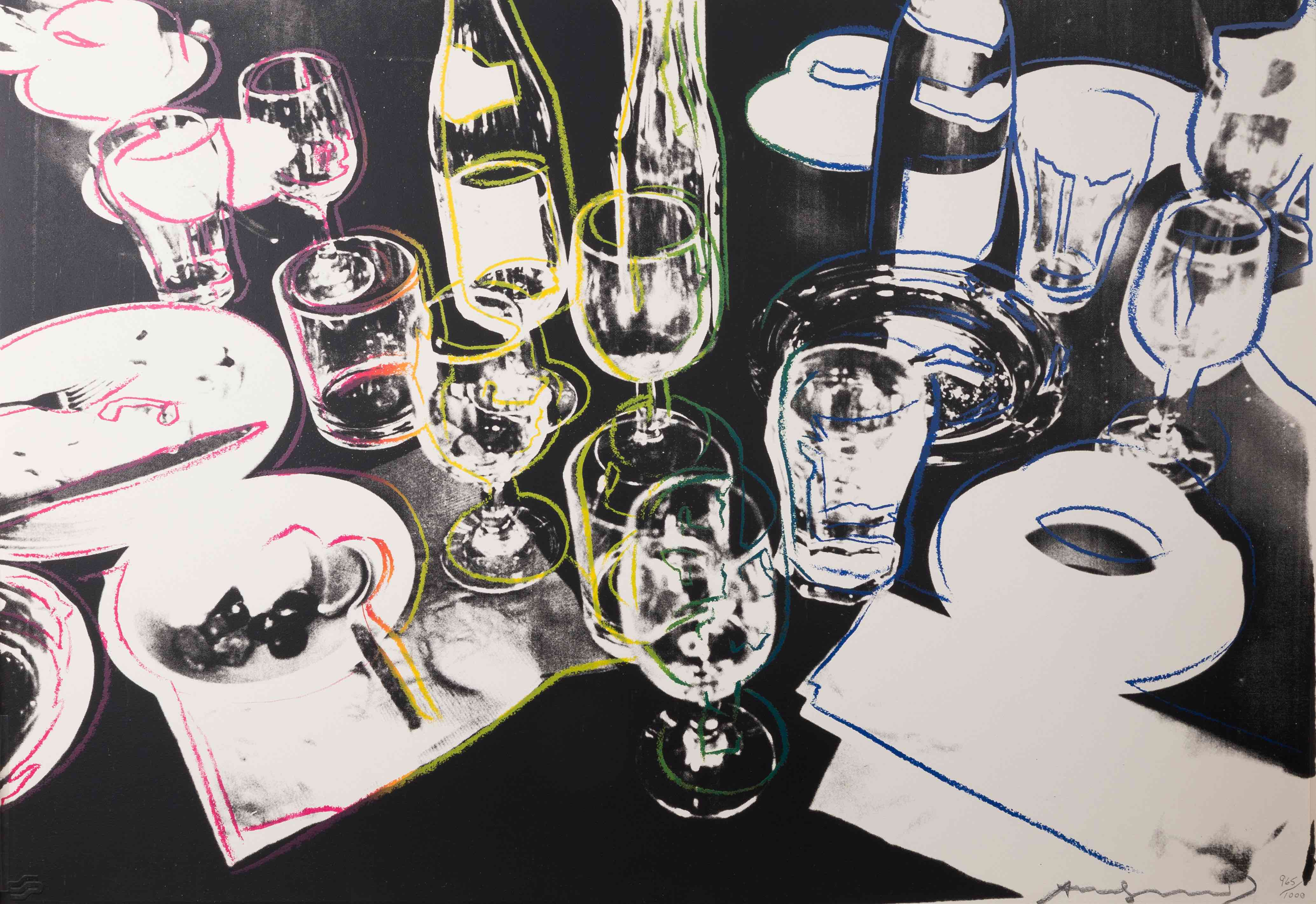
Born in Arizona on November 15, 1920, Thiebaud’s family moved to California a year later. Described as possibly “the hardest-working artist in America,” the Turner is happy to celebrate the iconic artist’s immense contributions on the occasion of his 100th birthday. The Turner has three of Thiebaud’s prints in the collection (one woodcut and two etchings), as well as works by friends, contemporaries, and former students. Though most associated with pop art and the Bay Area Figurative Movement, his work defies a single classification, and Thiebaud himself rejects the label of pop artist(opens in new window). Thiebaud worked as a cartoonist and graphic designer before embarking on an academic teaching career. He is best known for his paintings and prints of colorful desserts.
In addition to the prints by Thiebaud from the Turner Collection, we are grateful to Reed Applegate for loaning two additional Thiebaud works. The prints by additional artists included in this online exhibition celebrate Thiebaud’s many connections over his long and prolific career. Thiebaud was influenced by the work of his close friend Richard Diebenkorn (1922-1993), whose work is represented in this exhibition with a print donated by Dr. Paul Zingg. Thiebaud’s work was included in the seminal pop art exhibition “New Painting of Common Objects” at the Pasadena Art Museum in 1962 (now the Norton Simon), along with Andy Warhol (1928-1987), Jim Dine (b. 1935), and Edward Ruscha (b. 1937), whose works are all included. At Sacramento City College, Thiebaud taught Fritz Scholder (1937-2005) and Mel Ramos (1935-2018). He joined the art faculty at UC Davis in 1960, where he worked and exhibited with fellow faculty members Roy De Forest (1930-2007), William T. Wiley (b. 1937), and Robert Arneson (1930-1992), and taught David Gilhooly (1943-2013). Also included are contemporaries Michael Bravo and Robert Nugent.
Among his many honors, Thiebaud received the National Medal of Arts in 1994, and the Lifetime Achievement Award from the American Academy of Design in 2001. So enjoy a slice of cake, a scoop (or two) of ice cream, or a piece of pie as we celebrate the work of this singular California artist. Even better, consider submitting to the Turner Cake Contest.
Thiebaud’s contributions to art are currently featured in a stunning retrospective at the Crocker Museum, “Wayne Thiebaud 100: Paintings, Prints and Drawings,” October 16, 2020-January 3, 2021, and “Wayne Thiebaud” at Berggruen Gallery in San Francisco, October 16-November 28, 2020.
Thiebaud Cake Contest







Resources
- "Having His Cake and Eating it Too," Berggruen (2020)
- "Of course Wayne Thiebaud is planning to paint on his 100th birthday", Datebook (2020)
- Video: "Wayne Thiebaud: Beyond the Cakes" (3:34) Smithsonian
- "Wayne Thiebaud: An Eye for Art," (PDF) National Gallery of Art
- "Wayne Thiebaud's 'Double Scoop,'" The New Yorker (2020)
- "Wayne Thiebaud Is Not a Pop Artist," Smithsonian Magazine (2011)
Museums, Archives, and Exhibitions
The Art of Marion Epting
December-January 2020
This exhibition explores the work of Emeritus printmaking professor Marion Epting, the first Black faculty member hired at Chico State in a tenure-track position (honored with the Turner Prize for Excellence in the Arts 2018/2019), and will feature an interview with the artist and recollections by former students and colleagues.
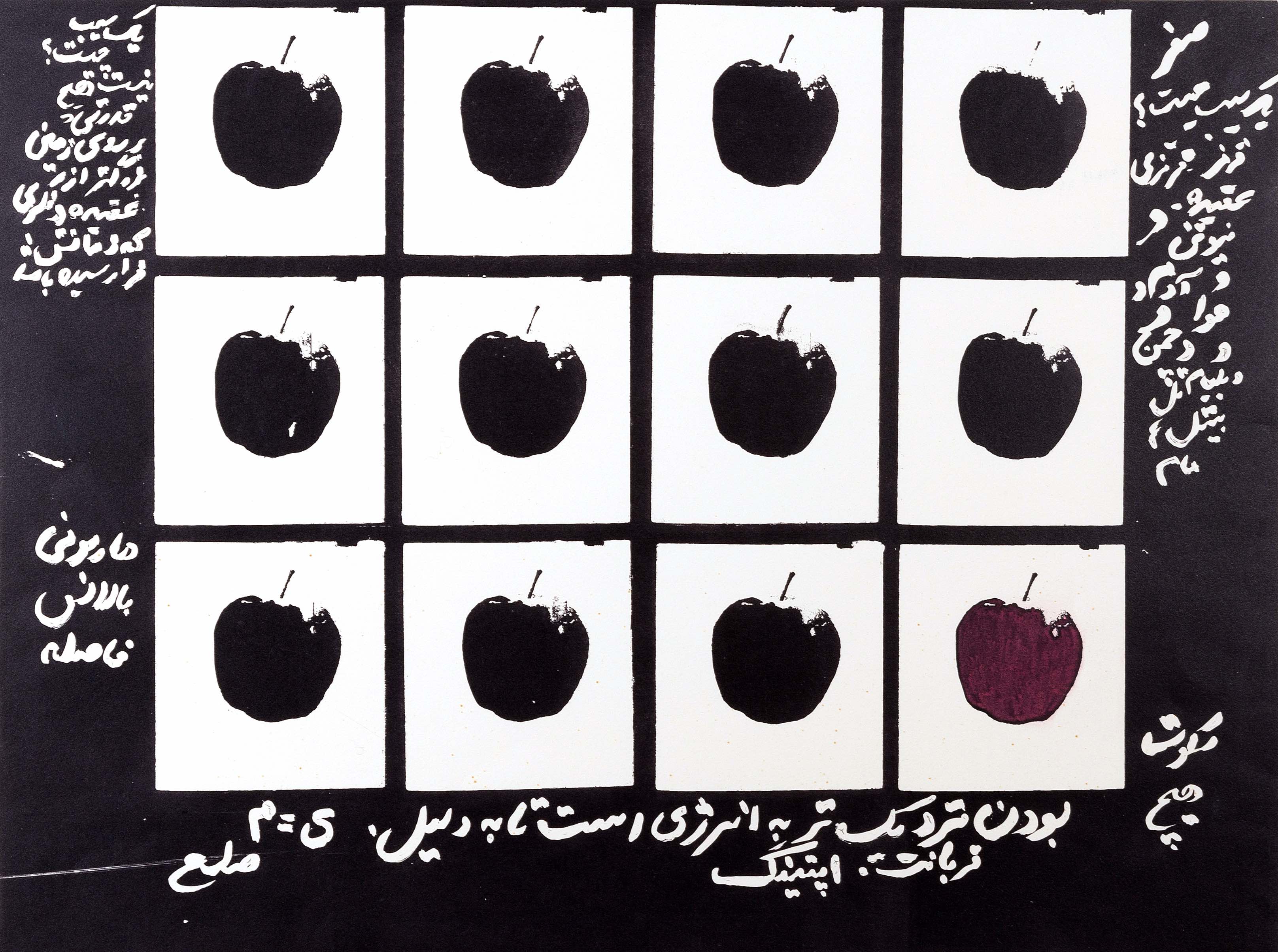
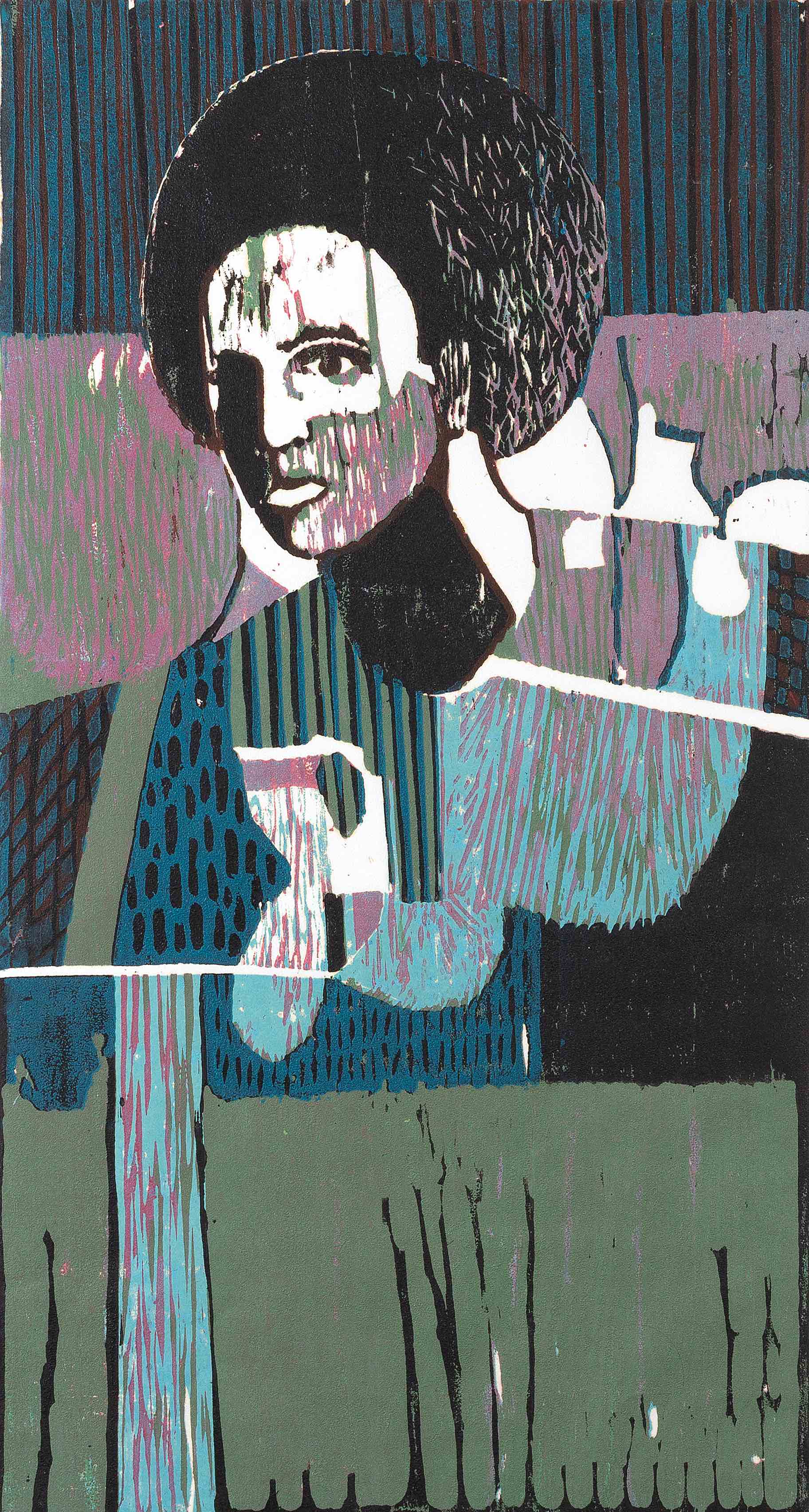
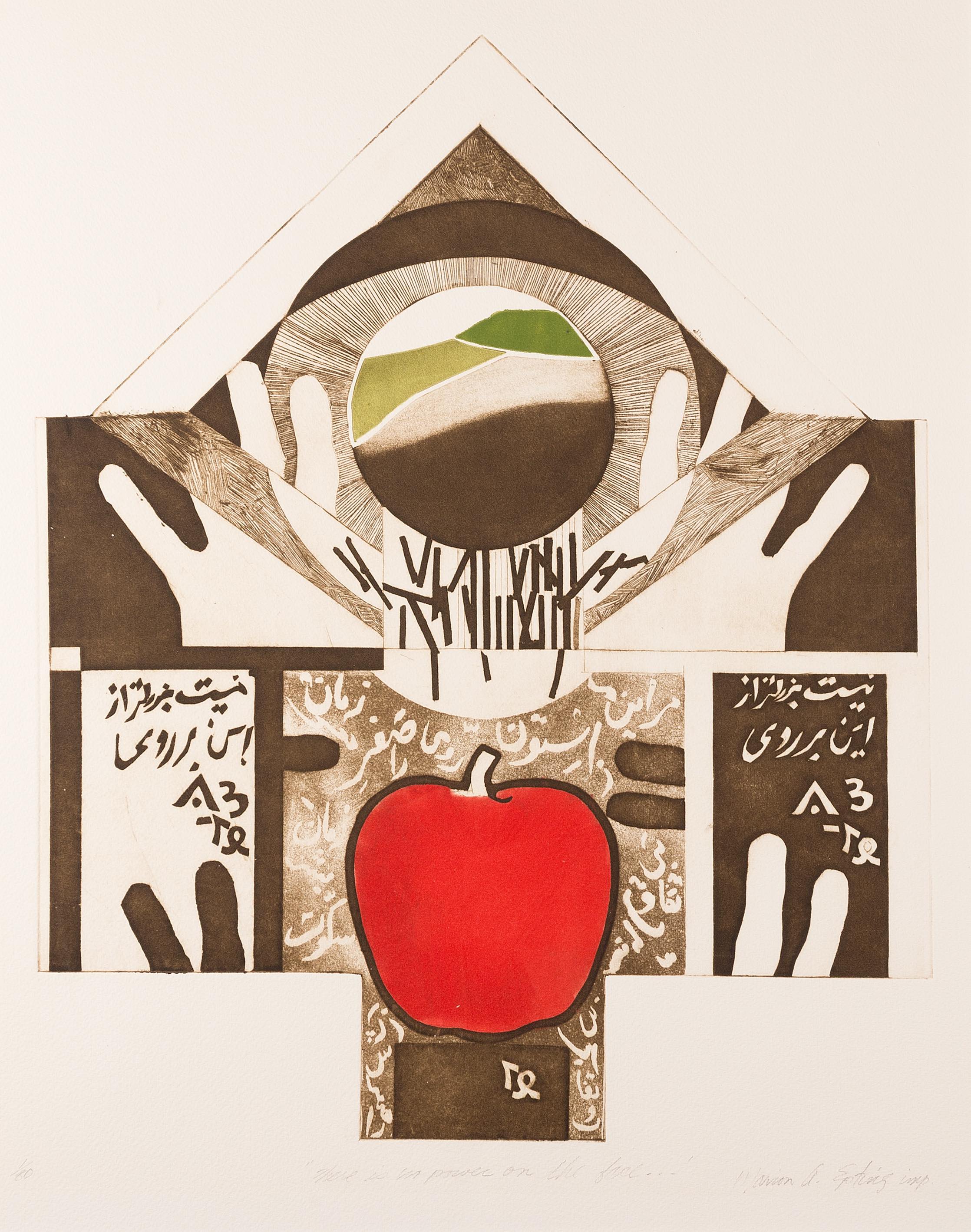
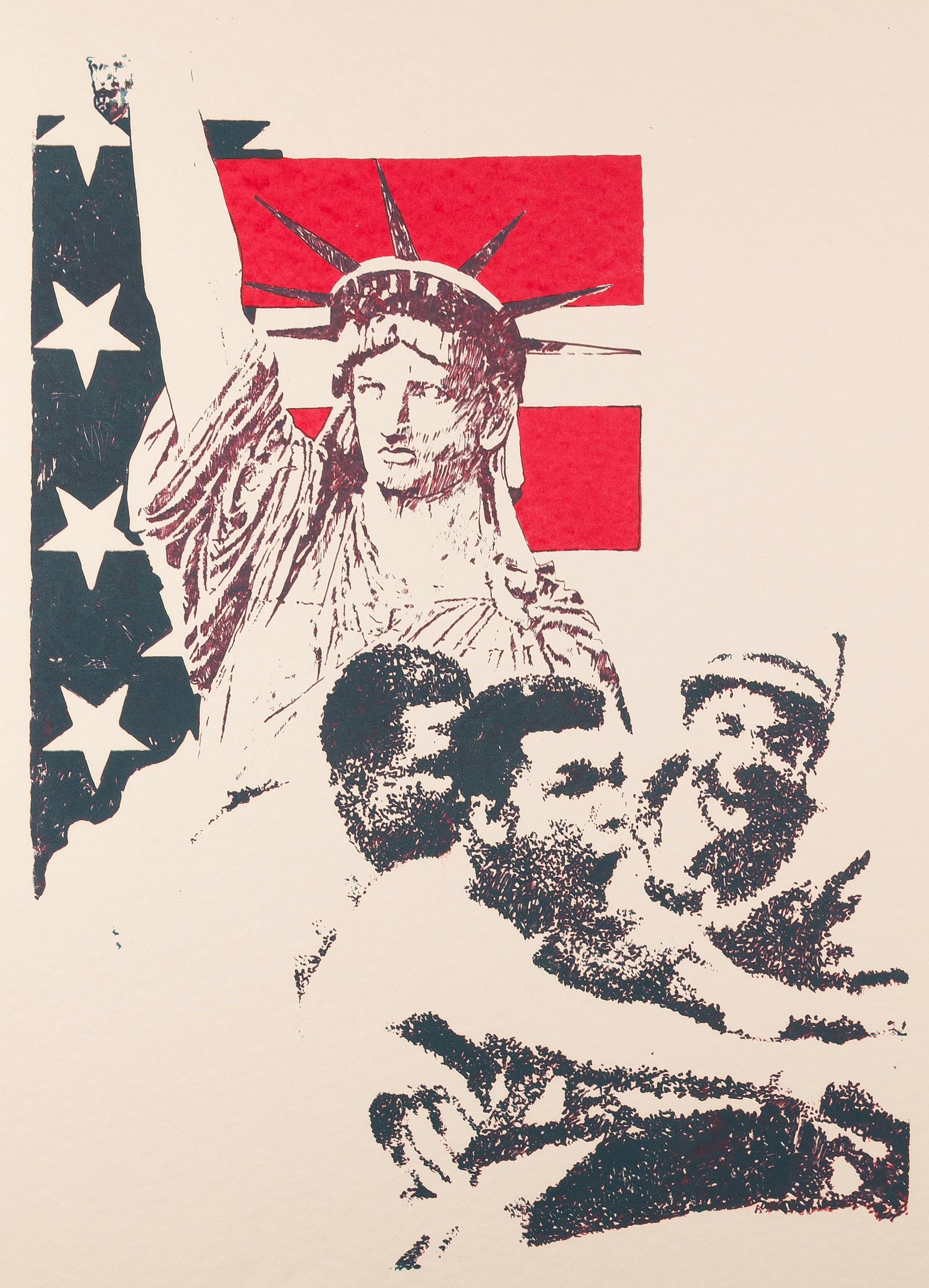
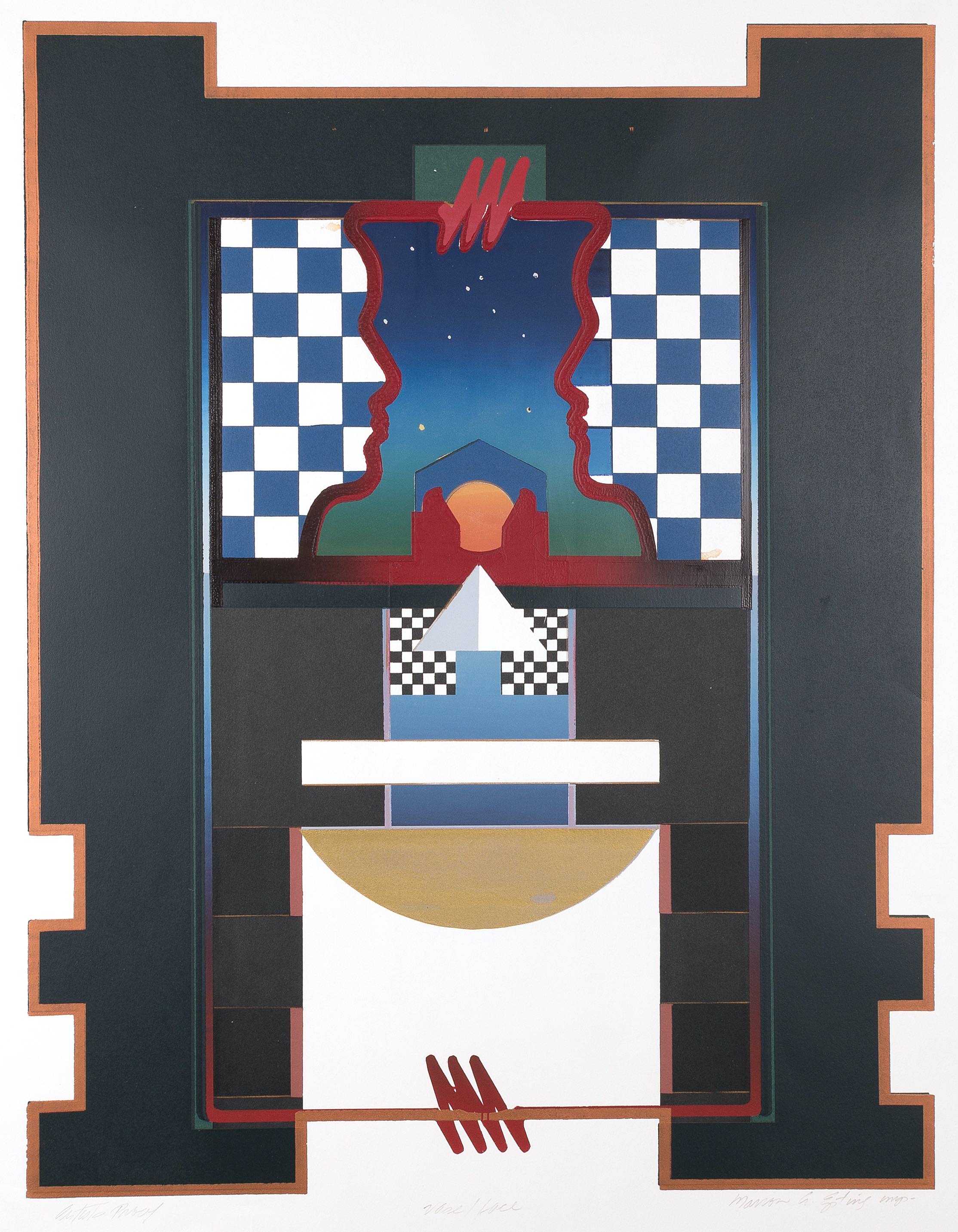
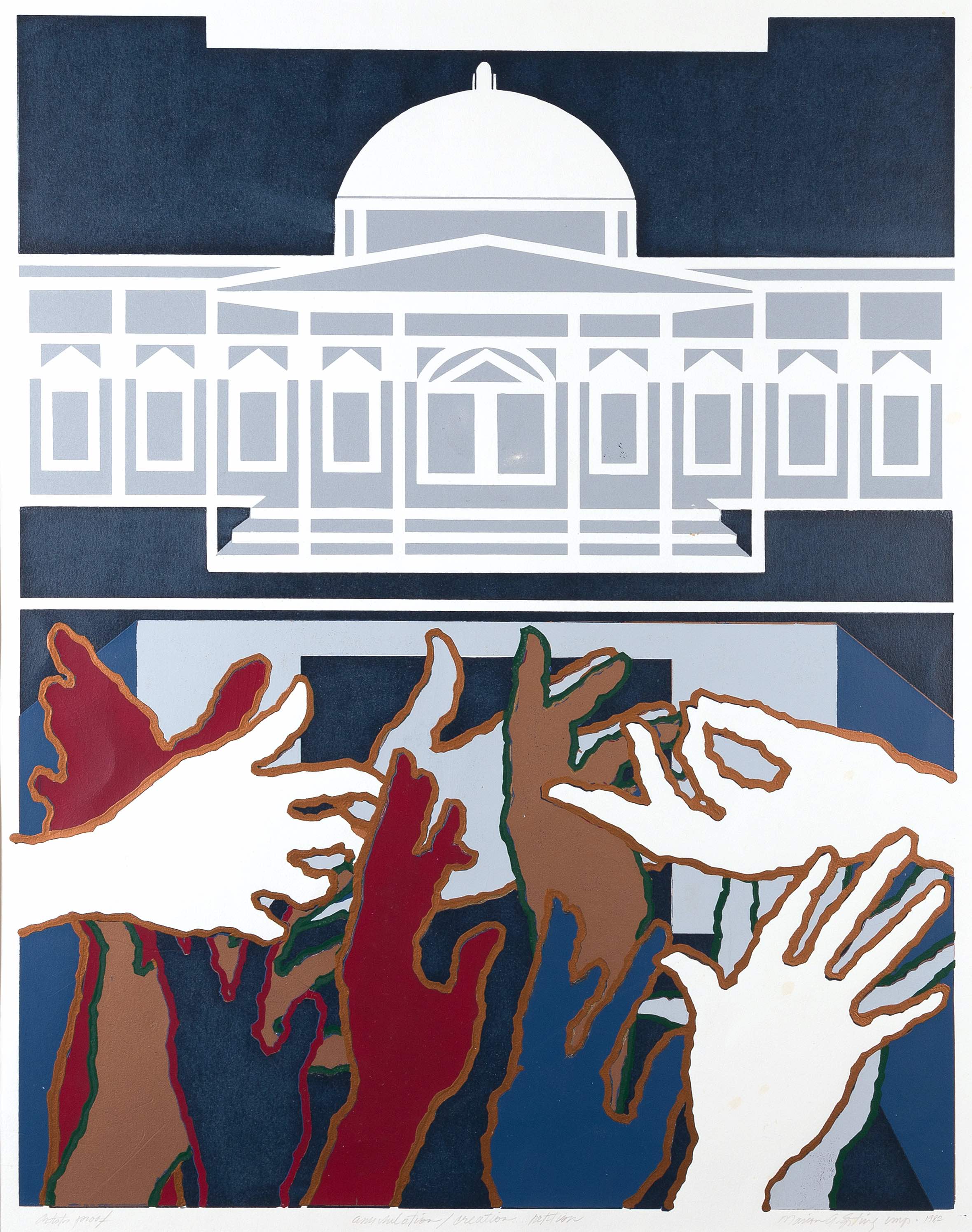
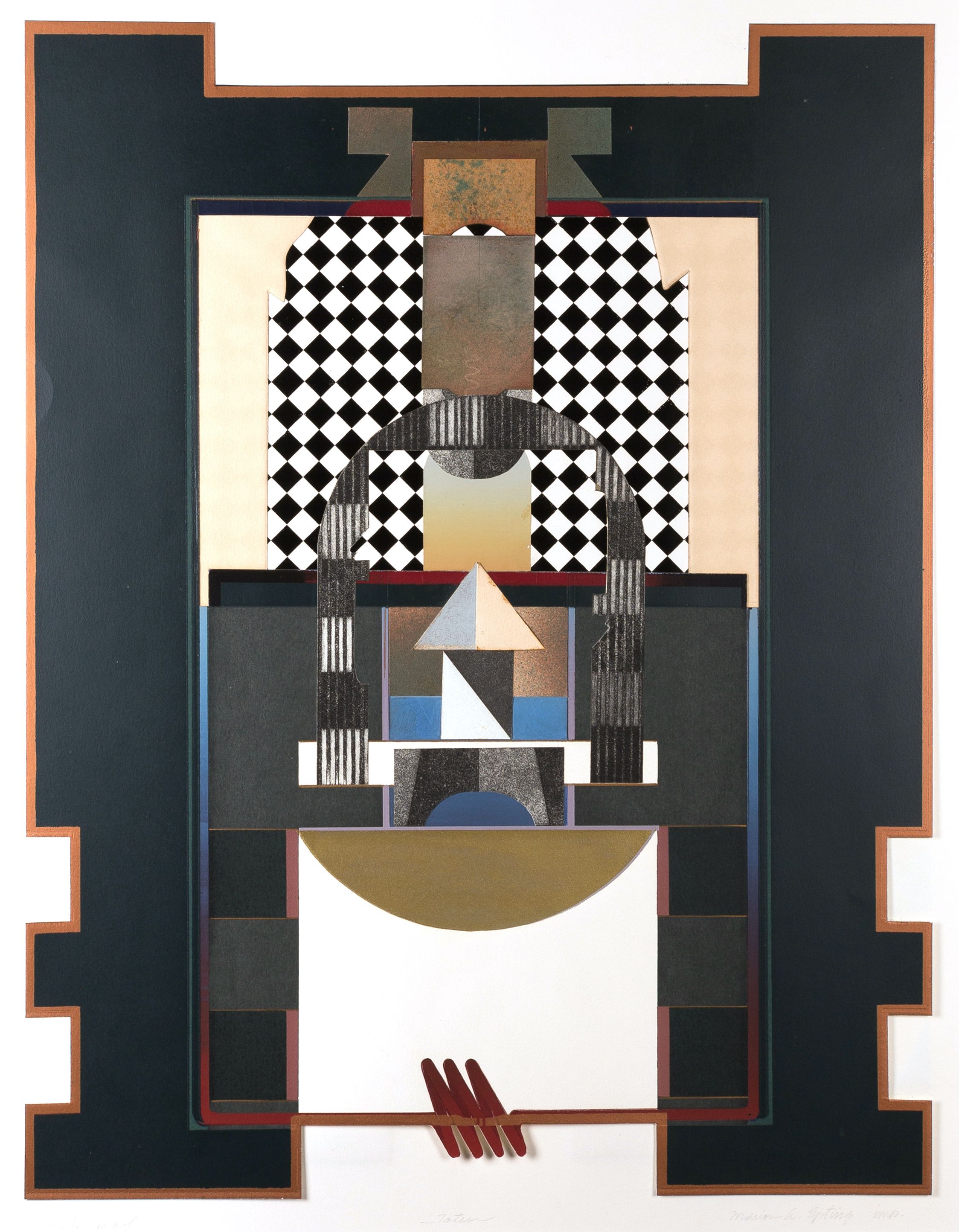
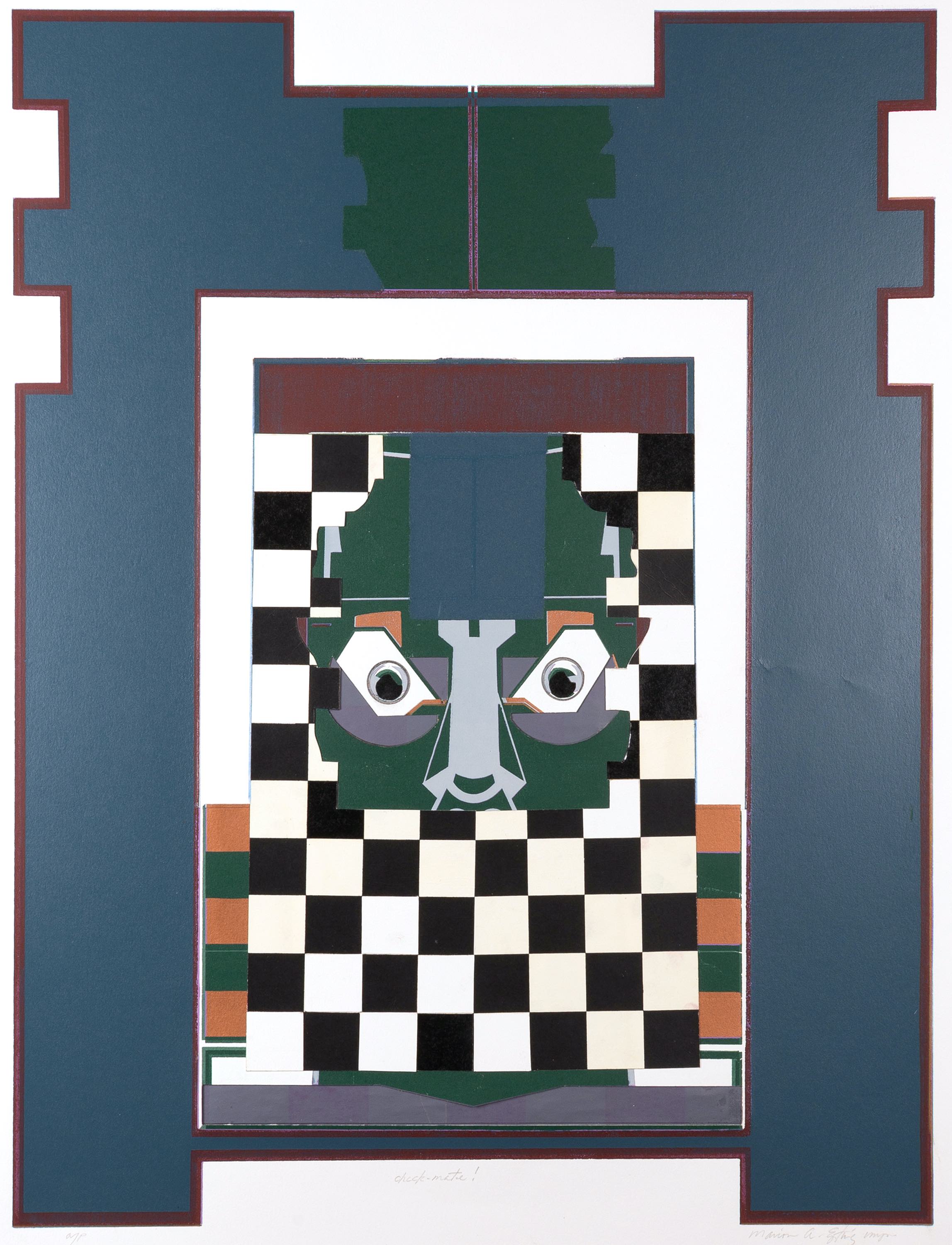
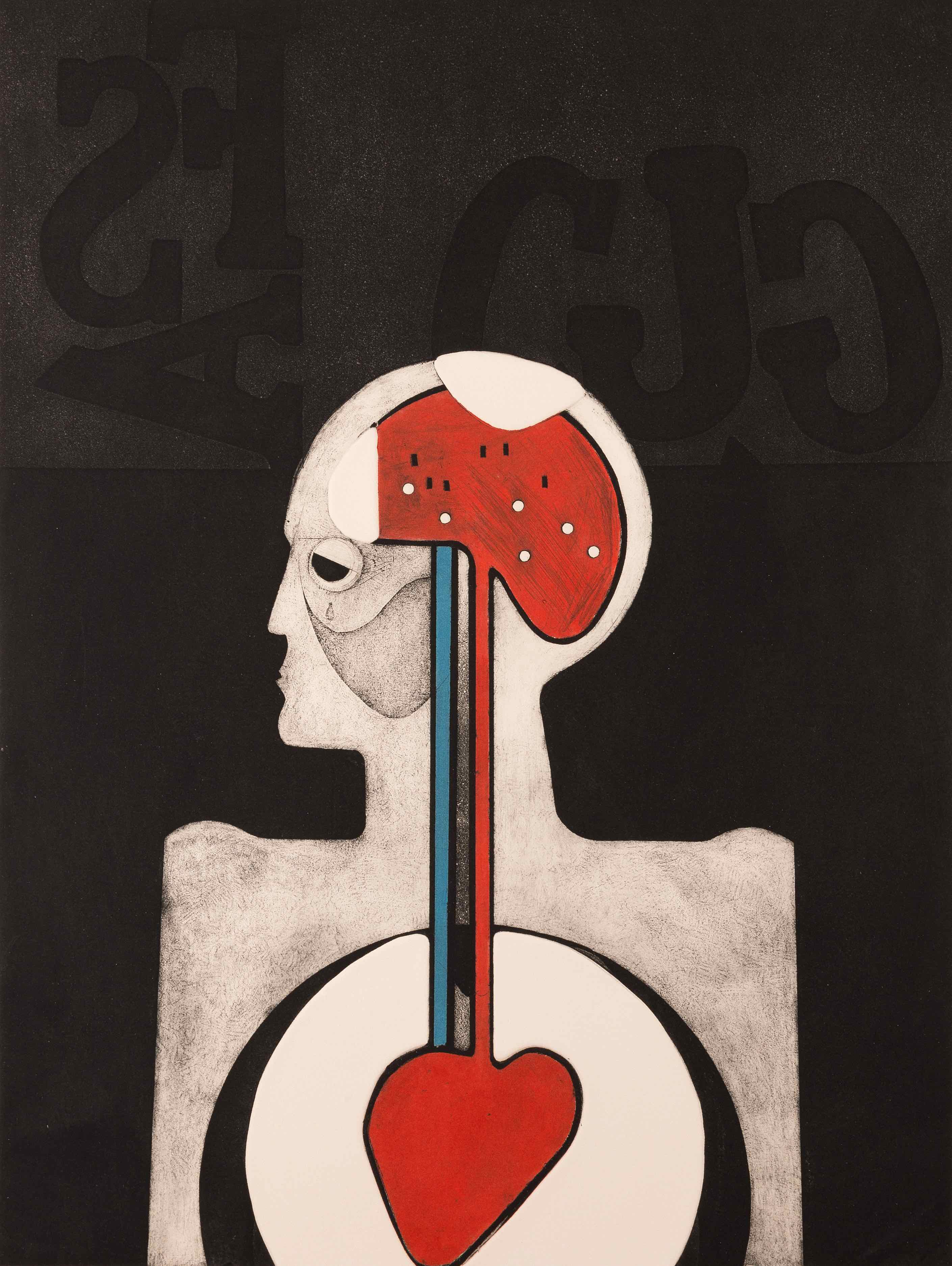
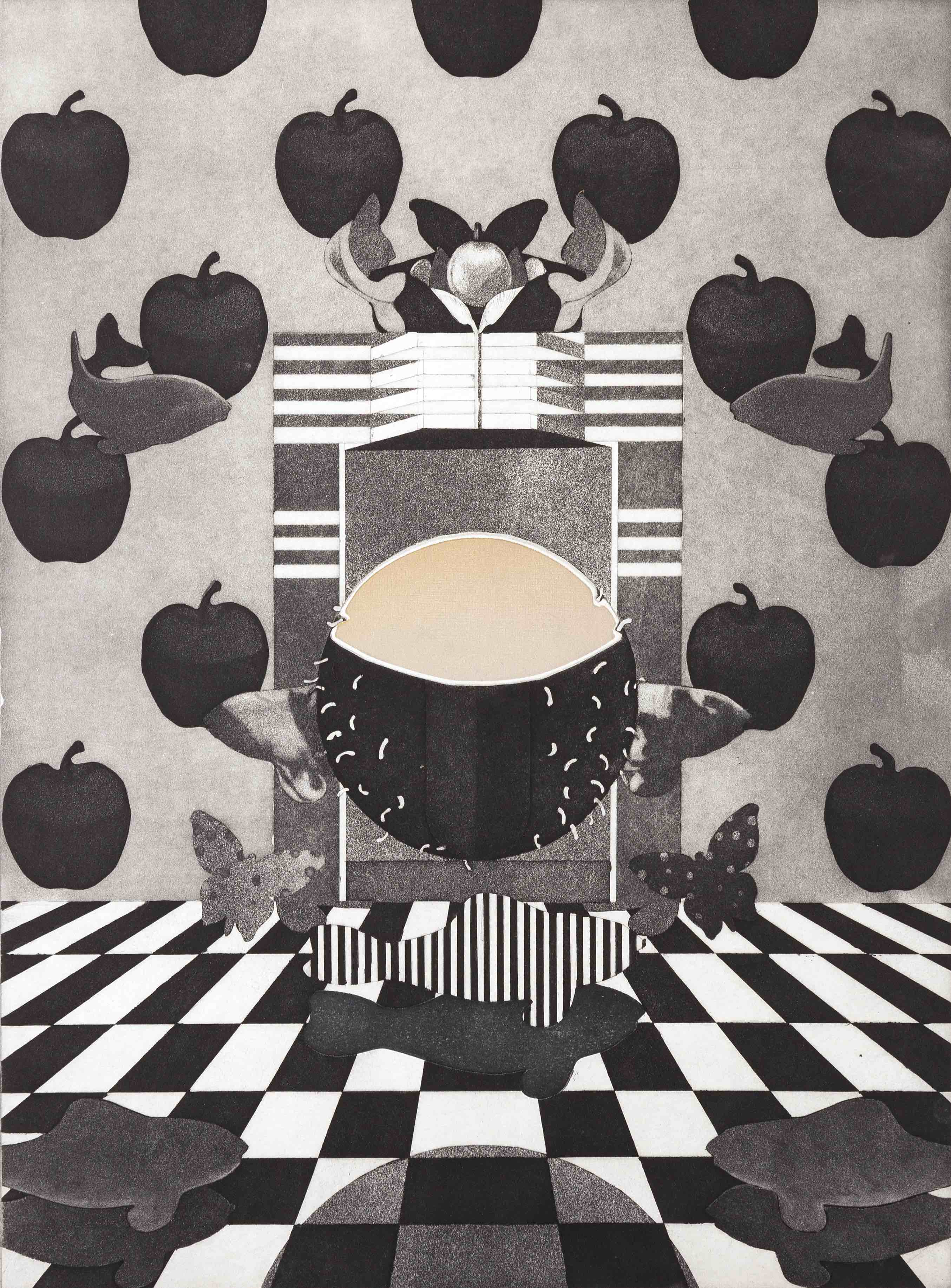
Spring Semester, 2021
Social Commentary: Prints and Politics
February-March, 2021
This virtual exhibition explores the significant intersection of printmaking and politics.
Dean Tracy Butts Interview with Thomasin Saxe: Berkeley 1968-70
360 Exhibition Video
Click and drag to explore the installation. Or view photos of the installation.Singular: Monoprints and Monotypes
April, 2021
This virtual exhibition honors the expressive and individual qualities of monoprints and monotypes.
- Monotype Demonstration and Artist Talk: Sarah Smelser
March 29, 5:00 PM
Artist bio:Sarah Smelser received her BA from University of California at Santa Cruz, her MA and MFA from the University of Iowa. She has been an artist in residence at Vermont Studio Center; Franz Masereel Center, Artica Bilbao, Kala Art Institute, Jentel Artist Residency, Skopelos Foundation for the Arts, Anchor Graphics, Ballinglen Arts Foundation, and Tamarind Institute. Her work is in such collections as Readers' Digest Association, New York Public Library, Library of Congress, Hallmark Corporate Collection, and Elizabeth Foundation for the Arts.
Smelser has had solo exhibitions at Bridgewater/Lustberg & Blumenfeld in New York City, Kathryn Markel Fine Arts in New York City, Urban Institute for Contemporary Art in Grand Rapids, MI, Carnegie Mellon University, Bradley University, University of Wyoming, Diablo Valley College, Luther College and Spencer College. Her work has been included in many invitational and juried shows, and been shown at numerous art fairs including Art Frankfurt, Estampa (in Madrid), the Affordable Art Fair in New York, Art Miami, Red Dot Art Fair in New York and Miami, Art Santa Fe, Art Chicago, EDITION Chicago, Boston Print Fair, Baltimore Contemporary Print Fair, Editions/Artists’ Book Fair, and the Los Angeles Art Show. Smelser's work has been reviewed in Art on Paper: The Journal of Prints, Drawings and Photography, Abstract Art Online, Monotype, Monoprint, & Strappo Ezine and reproduced in New American Paintings.
Sarah is co-founder of Manneken Press with husband Master Printer Jonathan Higgins. Manneken Press is a fine art print publishing venture, currently thriving in Bloomington, IL, publishing the work of artists from around the United States and Colombia. From 2006 to 2008 Smelser acted as President of the Mid America Print Council, a national non-profit organization of artist printmakers and educators.
Sarah is Professor of Art and Associate Director of the Wonsook Kim School of Art at Illinois State University, Normal, IL

Sarah Smelser, "Morning Walk VI," 2021.
- Technique Description: Luna Retzer
Monotype
A monotype is a process that creates exactly one print. The artist applies ink or paint directly onto the plate or another smooth surface such as acrylic sheets. Once the image is created, the plate is then run through a press or printed with hand pressure to create a one off print. The look of these prints is often painterly, or maintains a similar appearance to charcoal drawings. The main difference between monotyping and other forms of printmaking, is that only one print of its kind is created, with little to no possibility of variable outcomes as the image is drawn directly onto the plate. An artist also has the ability to work reductively in this process, by covering the entire plate with ink. Then, rags, brushes, or even q-tips are used to remove the ink in specific areas on the plate. This process is extremely simple, but does require a lot of experimentation in order to get the desired results. A monotype effectively integrates printmaking and painting to create unique prints with painterly effects.
Monoprint
Monoprint is a collaborative form of printmaking in which an image is only made once. The process begins with a block, litho stone, or copper plate that has been worked to create a print. Once a print is pulled from the block, it is then reworked by combining artistic techniques, which in turn creates a unique one of a kind artwork. No two monoprints are the same as a result of this process. A successful monoprint can be accomplished through a variety of techniques, such as collage, painting and drawing, or hand coloring different areas. An artist can also apply ink to the plates in different ways to achieve unique results. This art form tends to be spontaneous and expressive, and allows for a vast amount of results from the same basic image. Monoprinting techniques successfully create a collaboration between traditional printmaking and other mediums. There is a greater emphasis on mark making and expressive use of line with this art form, and generally the artist's hand is more apparent.
Luna Retzer is a BA student in Art Studio, with an emphasis in printmaking
- Reflections on the Monoprint Workshop: John A. Armstrong
I began teaching at CSU Chico in 2002. By then, CSU Chico had hosted two Monoprint Workshops. In the years that followed, I organized three monoprint workshops in collaboration with Master Print John Armstrong, colleague Vernon Patrick who was Chair of the Department of Art and Art History, and James Snidle, a gallery owner in Chico who participated and generously hosted an exhibition of all the participants’ work to kick off the event.
Each workshop ran for five days at the end of May with approximately fourteen artists that had travelled from various locations in the US and Canada, to participate. Some hadn’t much experience in printmaking, so it was a truly collaborative experience thanks to John Armstrong’s expertise and the students’ help. The students gained valuable experience in running a workshop, assisting artists, and exhibition installation. They also learned new techniques and formed friendships with the visiting artists.
Through these workshops, I learned that I’d landed in a community that appreciated and supported the arts, and through their generosity of hosting artists and purchasing the prints on sale, we were able to make significant updates to the printmaking area in the art department, and foster the relationship between the university and the community.
Thanks to these workshops the Turner Print Museum was able to expand its collection of contemporary monoprints and monotypes. Since monoprints are unique prints, they are often more difficult to find and attain. As the Turner Print Museum planned the exhibition Singular: Monoprints and Monotypes I reached out to our dear friend and supporter, John Armstrong, asking him to share a little about the history of the Monoprint Workshop, and how it came to be.
Eileen Macdonald, CSU Chico Printmaking Professor
Seldom are thoughts and desires realized through the efforts of a single individual. The CSUC Monoprint Workshop is no exception.
The project that I put forward came about because of my personal involvement with the medium as one of the areas in our vertically integrated arts services business at Armstrong-Prior Inc. in Phoenix, Arizona. I, and more importantly my wife Joan Prior, began our work together with a simple print facility. While working with artists in the studio, we began to collaborate in curating (selecting, purchasing, framing and installing) collections for individuals and corporations.
Naturally enough, this experience led us to use many of the artists that we worked with in collections. As our business developed, we reached out to our clients as well as corporations and art institutions to join with us in the search and securing of many artists from varied backgrounds, cultures, styles and areas of discipline. Because visiting artists were usually available for short periods of time, it was nearly paramount that we developed methodology that could be time productive.
Another important aspect was that I have always viewed my work as experimental in nature and because my personal inclination has been to pursue the unexpected and unfamiliar. We didn’t have the luxury of time to develop etched or engraved plates, or finely drawn imagery on a lithographic plate. The alternative seemed to be the monoprint or the monotype. With a prepared monoprint matrix, an edition could be printed. However, if instead the image changed in some way or manner each time it passed through the press a great variety of results can be realized.
Because I love showing others the possibilities that can be revealed through the collaborative effort in the arts, it fostered a thought that a project could be initiated within an art institution that could benefit the host, the participating artists, students and community. I suggested this to numerous colleagues across the country and Mexico. There was enthusiasm but a lack of commitment.
Vernon Patrick (CSU Chico’s Department of Art and Art History Chair at the time) and I had attended undergraduate school together and had few contacts with one another since, even though our initial friendship and bonds were positive and endearing. Vernon reached out to me during a trip from Chico to Texas and a new, stronger relationship developed. Finally, I had a kindred spirit to approach with my project. After a couple years of discussions, Vernon made it possible with CSU Chico being the host institution for our first MONOPRINT WORKSHOP in (I believe) 2000.
The division of labor for the first couple of workshops was for me to invite the artists based on those with whom I had a working relationship. Also, because of my printmaking experiences and our business design, it rested with me to order supplies including paper, inks and mats. Vernon readied the print facility, student assistants and lined up members of the community to provide housing for the artists and other Chico entertainment during the week long activity. As the workshops developed, Vernon got more involved with the artist invitations, as did Eileen Macdonald after she was hired in 2002.
The basic program was constructed around a collaborative atmosphere of artists of all stripes working with each other and student assistants in the production of monoprints or monotypes. From the quantity produced by each artist a selection of two were made for a workshop ending exhibition sale and celebration. The reasons that this project was successful are many. Invited artists came to Chico at their own expense. Community members assisted in boarding those artists that had such need. CSU Chico equipped the print facility with support from the School’s Administration. In fact, I believe when Eileen became involved as a new faculty member, she secured, with the assistance of the University’s Dean, a new press for the printmaking area. The student assistants worked tirelessly in making production and comfort of environment a major concern. Some community members provided after workshop get together and dinners and many supported the project on the very important Saturday Night Exhibition and Sale which generated funds that were used to support the printmaking program. It required a high level of generosity on the part of all involved for it to be successful.
In closing, I have found it personally rewarding to work with many non-printmaking based artists. Ceramists, painters, and sculptors have all brought something new to the print lab which challenged my abilities to interact in a collaborative way while giving me a singular opportunity to grow my knowledge, ability and education.
It was a lot of work on every dedicated participants’ part but we all received more than we put in.
Turner friend, colleague, and Master Printer
John A. Armstrong
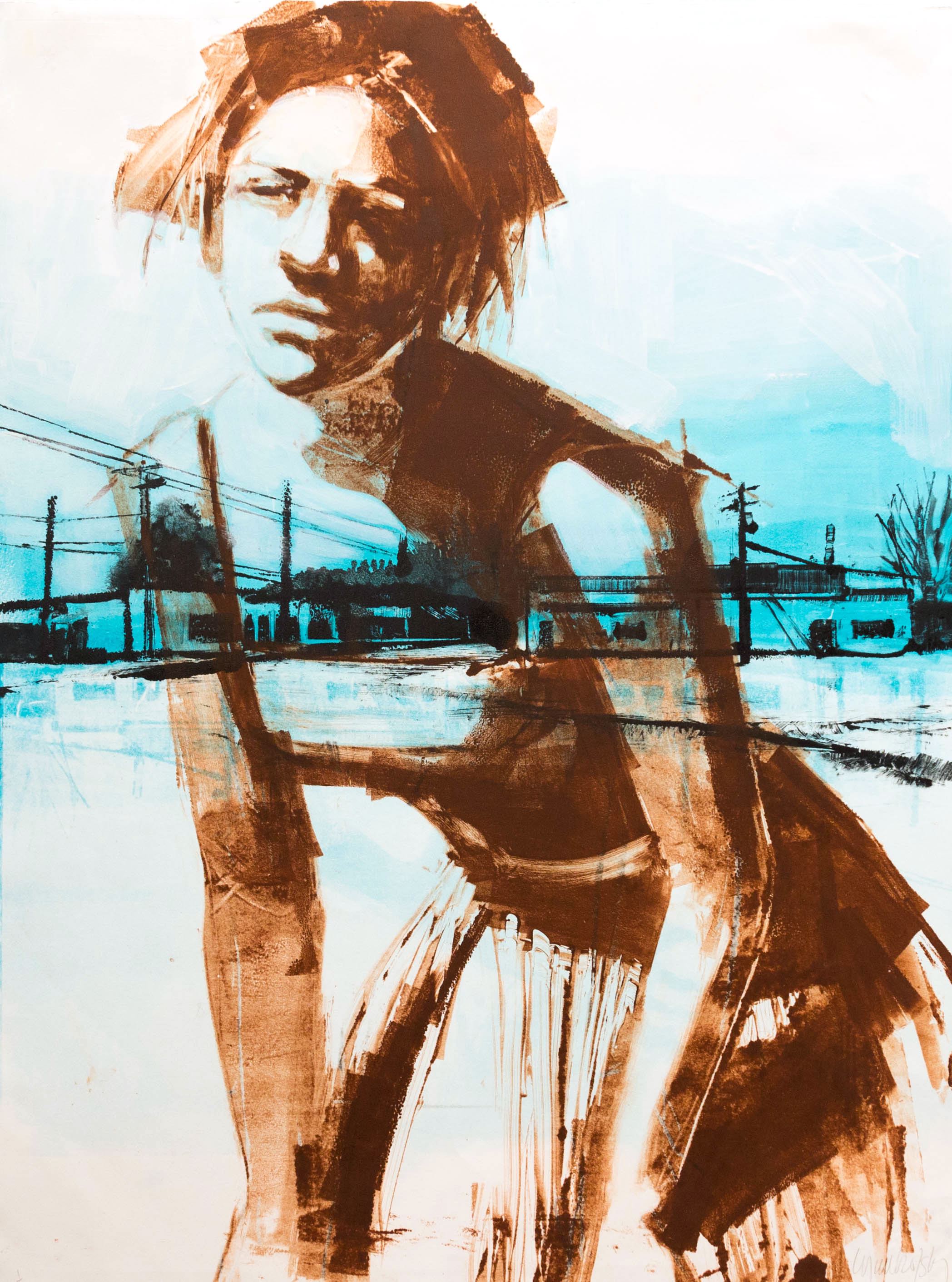 Lynn Brofsky, "Heart of Town," monotype, 2009.
Lynn Brofsky, "Heart of Town," monotype, 2009. 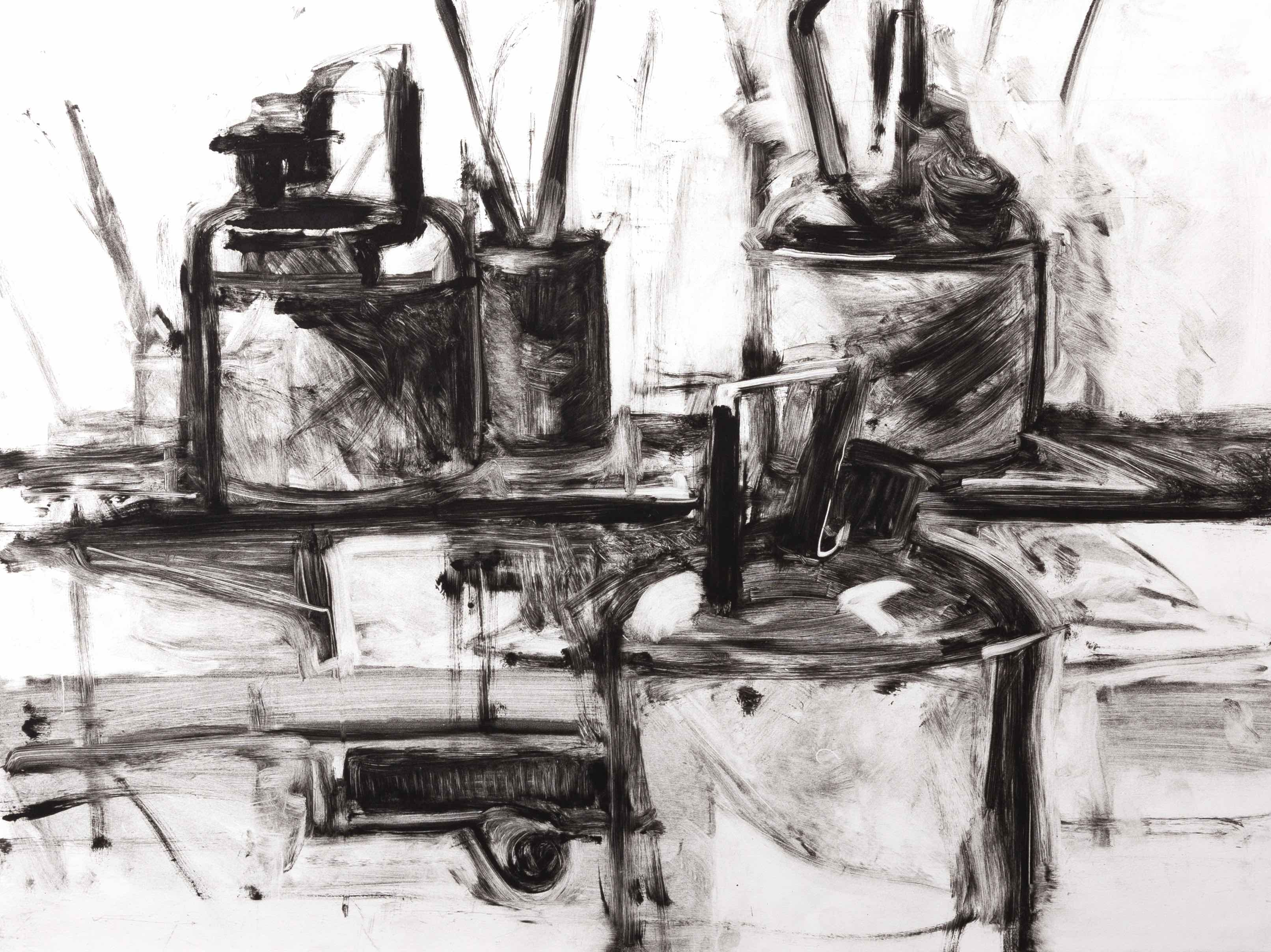 N. Bergen, "Solvent Cans," monotype, 1979.
N. Bergen, "Solvent Cans," monotype, 1979. Jana Harper, [Untitled], monoprint.
Jana Harper, [Untitled], monoprint.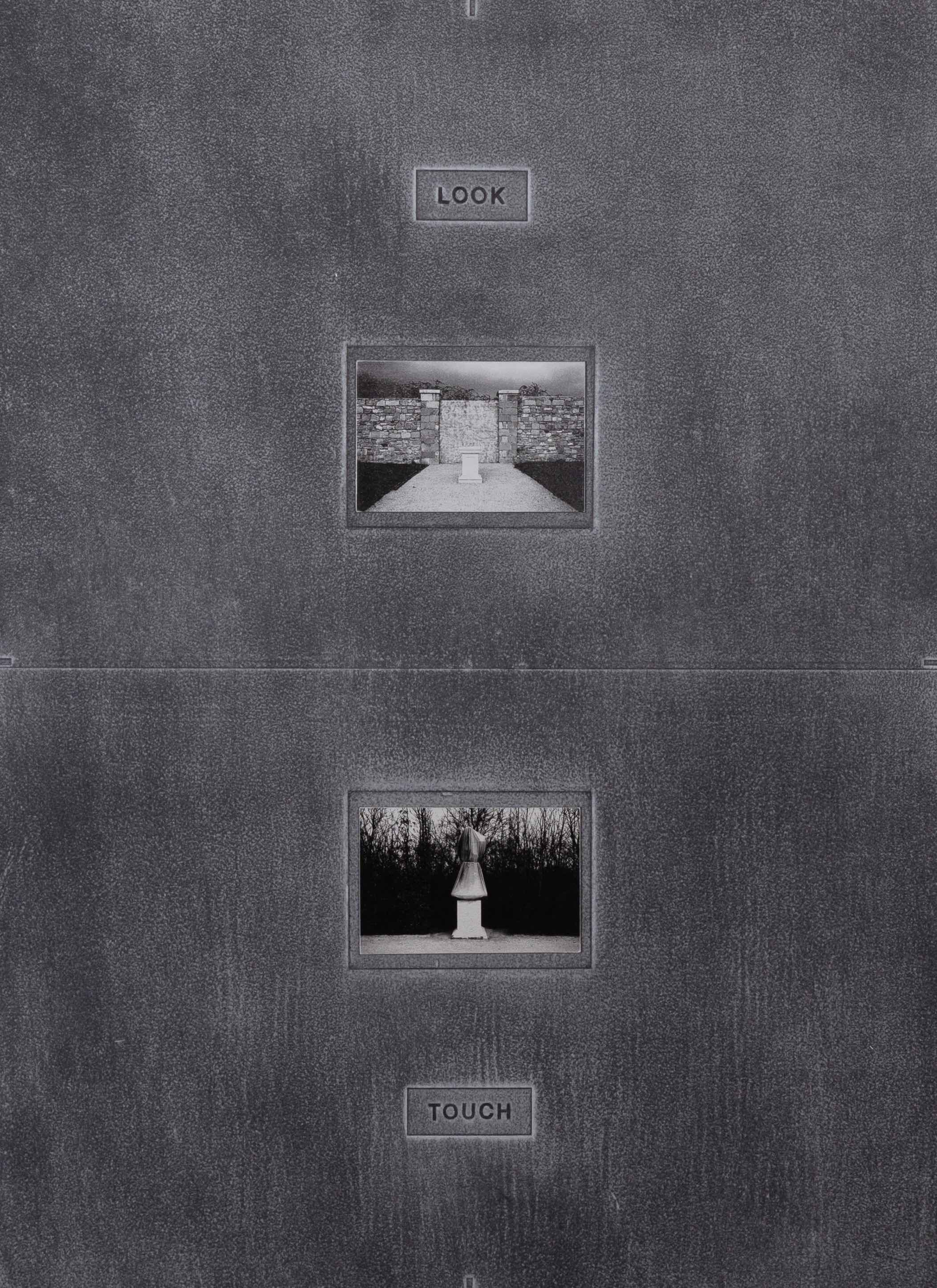 Dennis Gillingwater, "Look Touch," monoprint, 2002.
Dennis Gillingwater, "Look Touch," monoprint, 2002.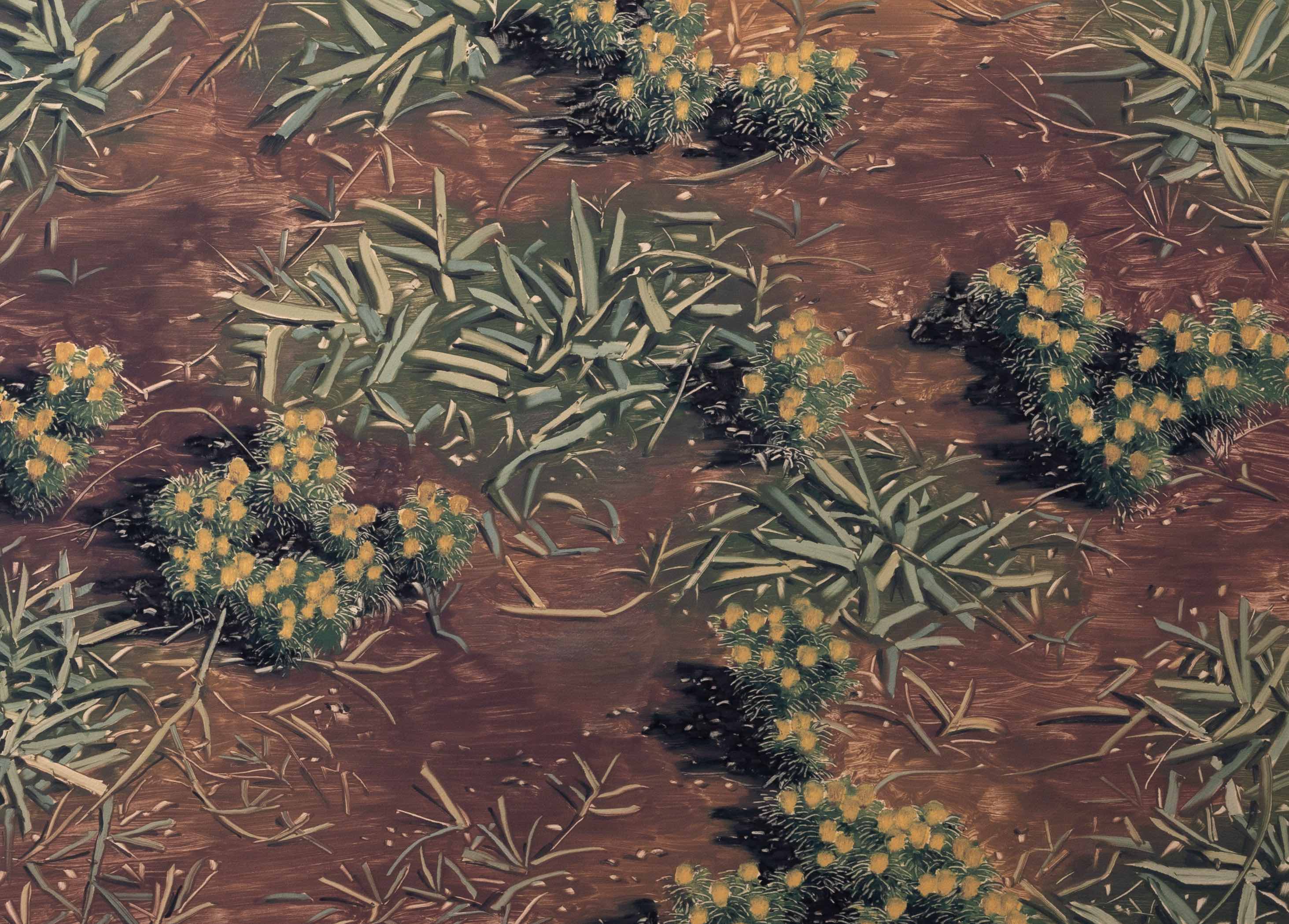 Susan Van Horn, "Disturbed Place #3 (Field)," monotype, 1985.
Susan Van Horn, "Disturbed Place #3 (Field)," monotype, 1985.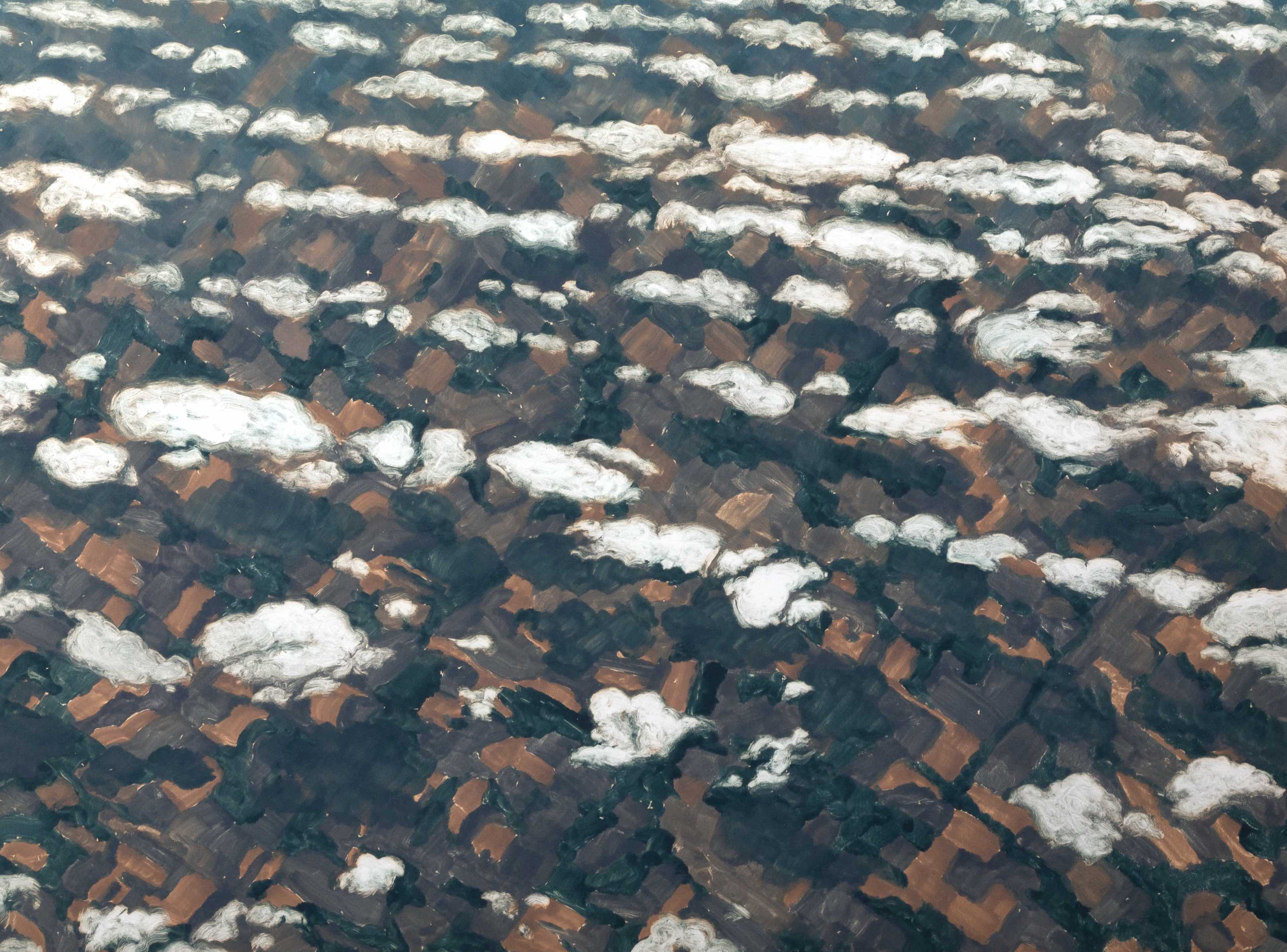 Susan Van Horn, "Clouds I," monotype, 1988.
Susan Van Horn, "Clouds I," monotype, 1988.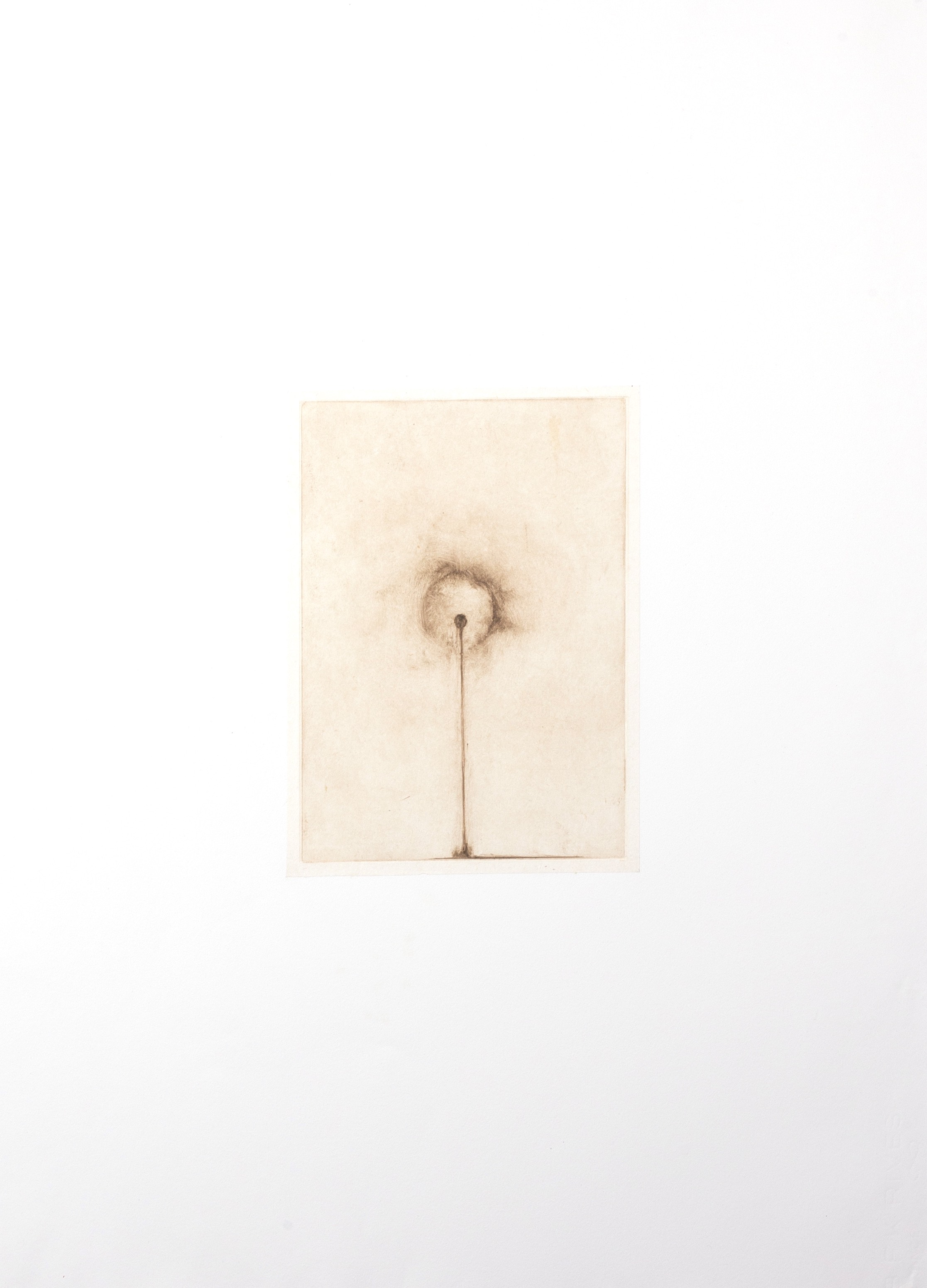 Bob Erikson, "New Hope," monoprint, 2002.
Bob Erikson, "New Hope," monoprint, 2002.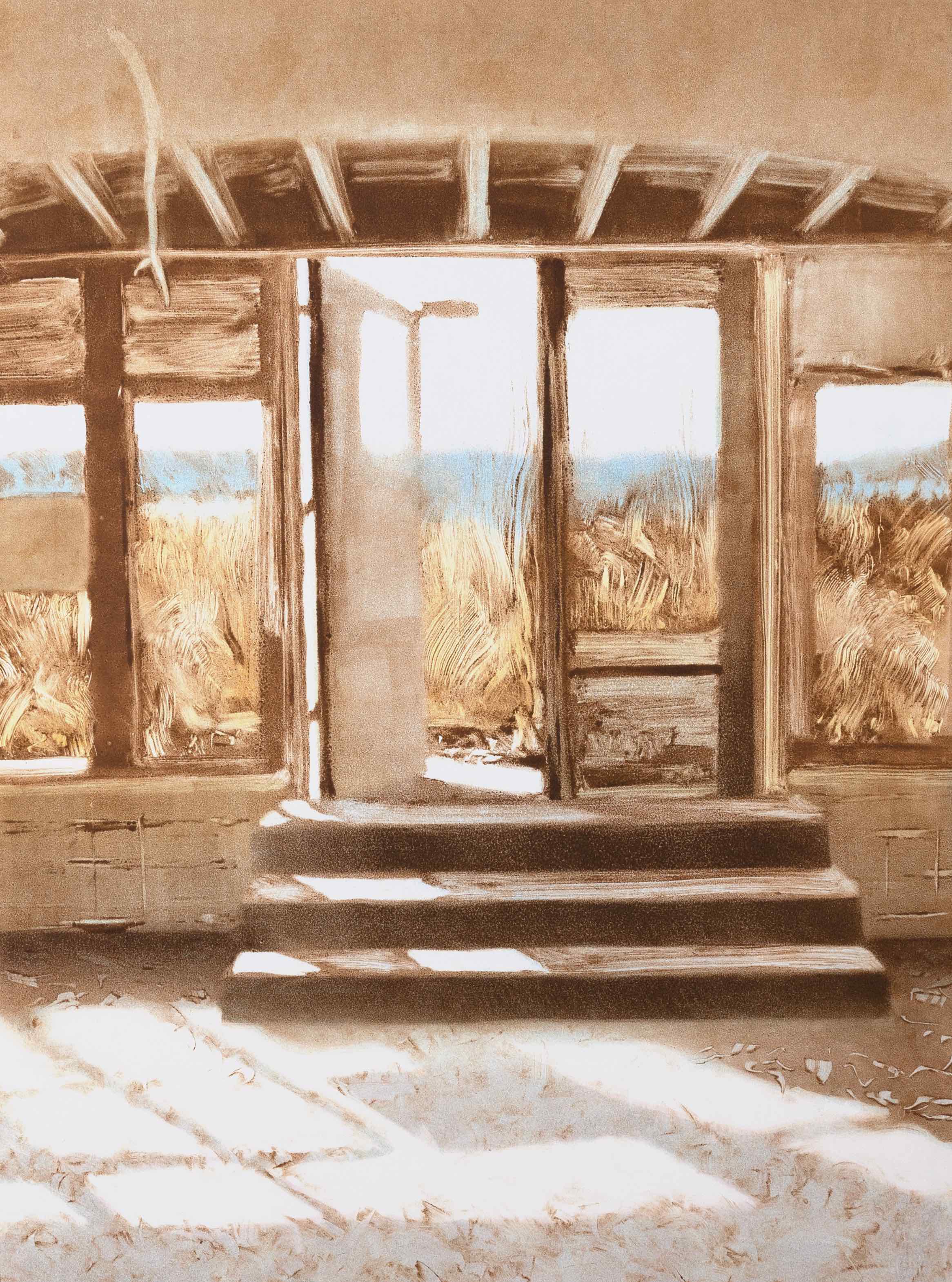 Linda Grebmeier, "Yuba Site 6," monotype, 2008.
Linda Grebmeier, "Yuba Site 6," monotype, 2008.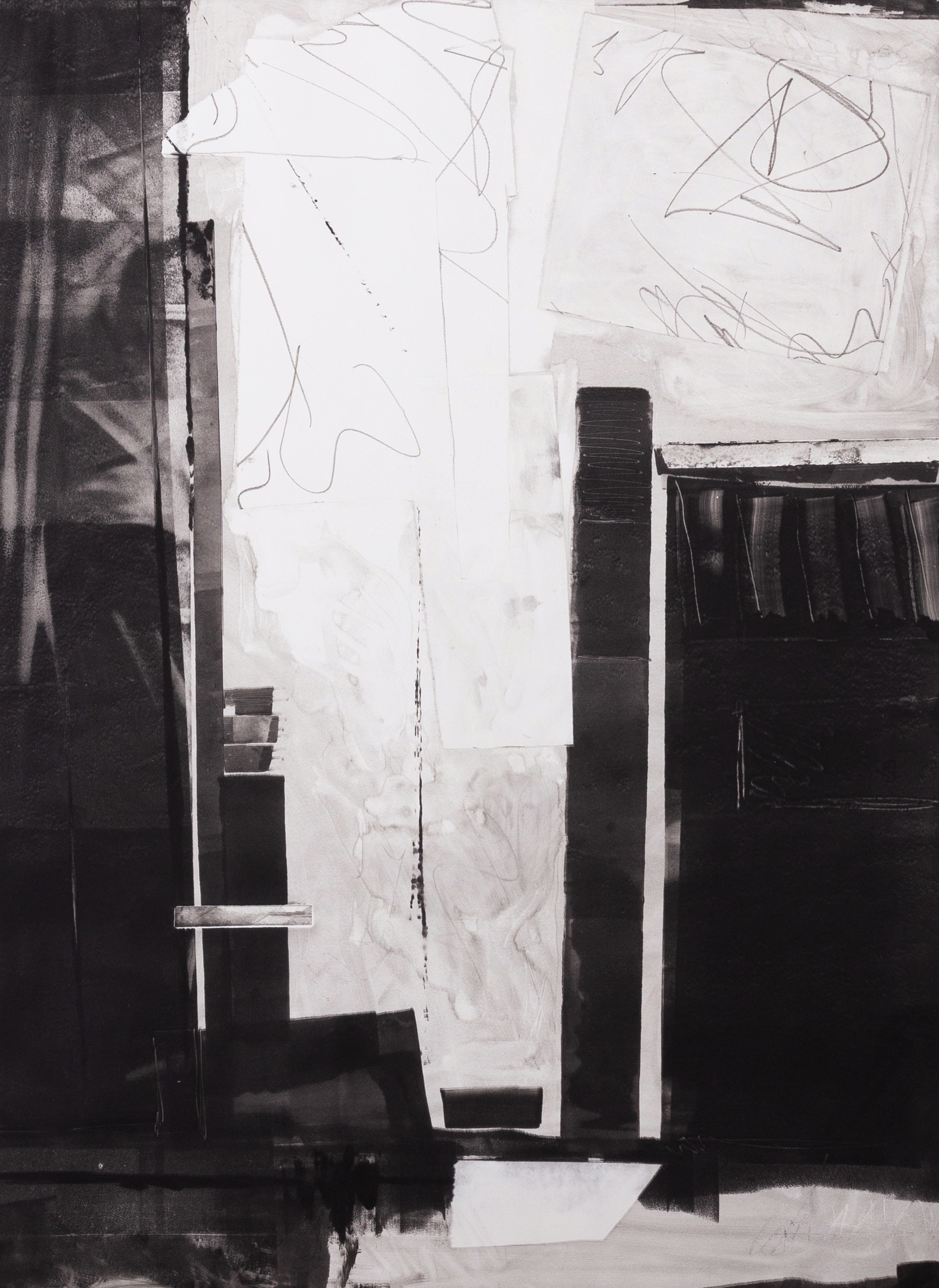 Susan Canavarro, "Some Chico Walls," monotype, 1991.
Susan Canavarro, "Some Chico Walls," monotype, 1991. John Armstrong, [Untitled], monoprint, 2005.
John Armstrong, [Untitled], monoprint, 2005.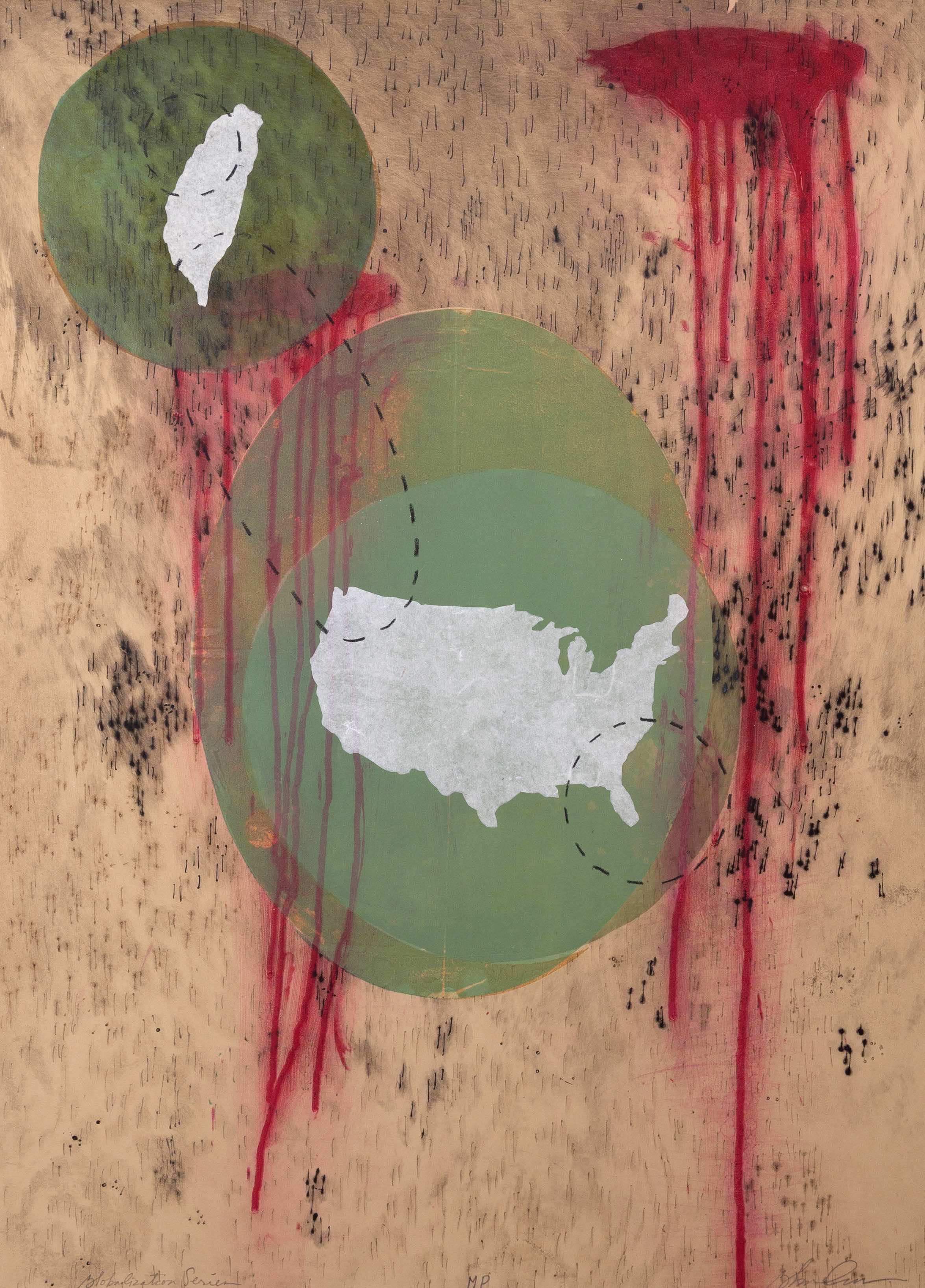 Gretchen Schermerhorn, "Globalization Series," monoprint and chine collé, 2006.
Gretchen Schermerhorn, "Globalization Series," monoprint and chine collé, 2006.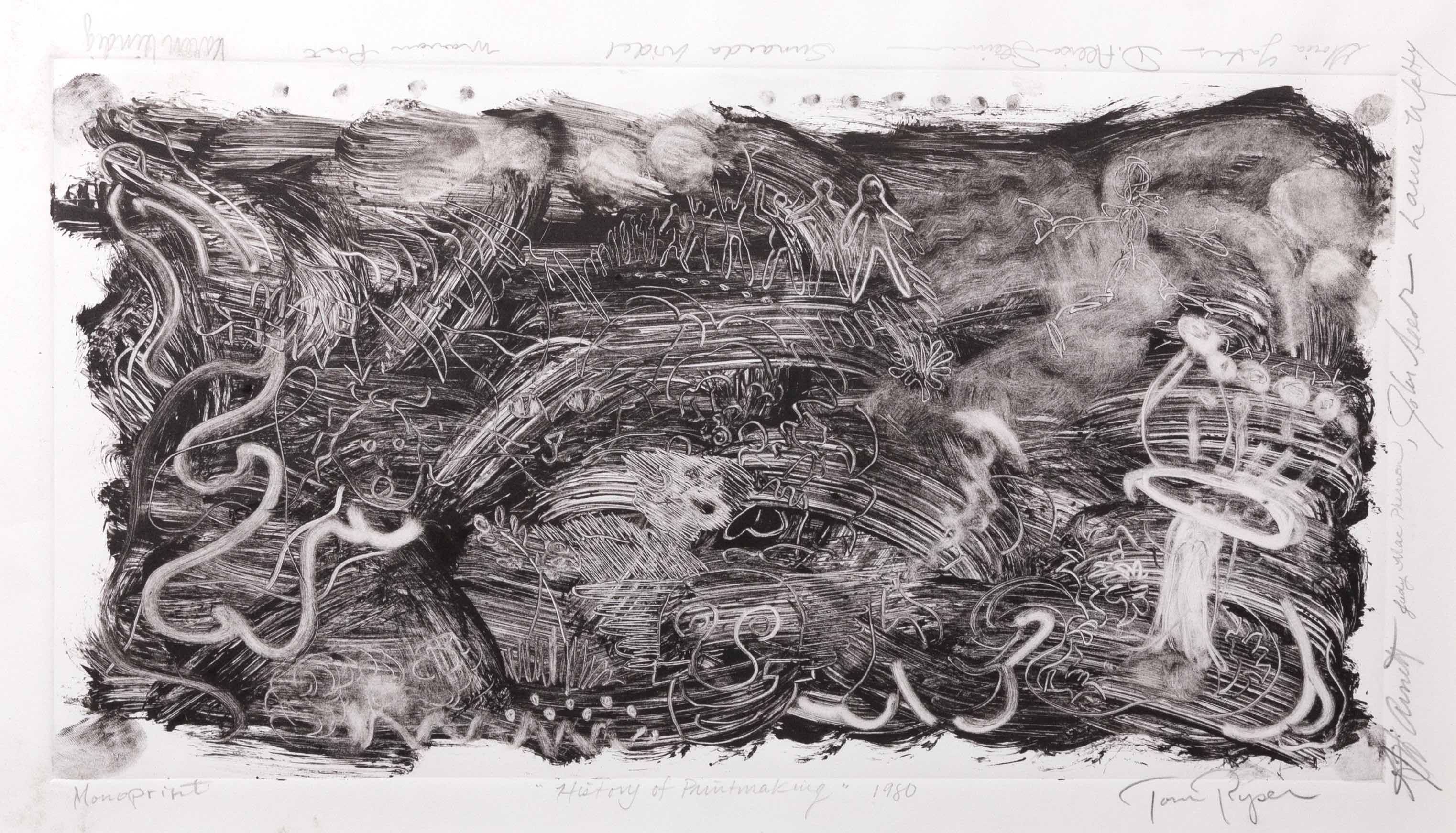 Tom Ryser, "History of Printmaking," monoprint, 1980.
Tom Ryser, "History of Printmaking," monoprint, 1980.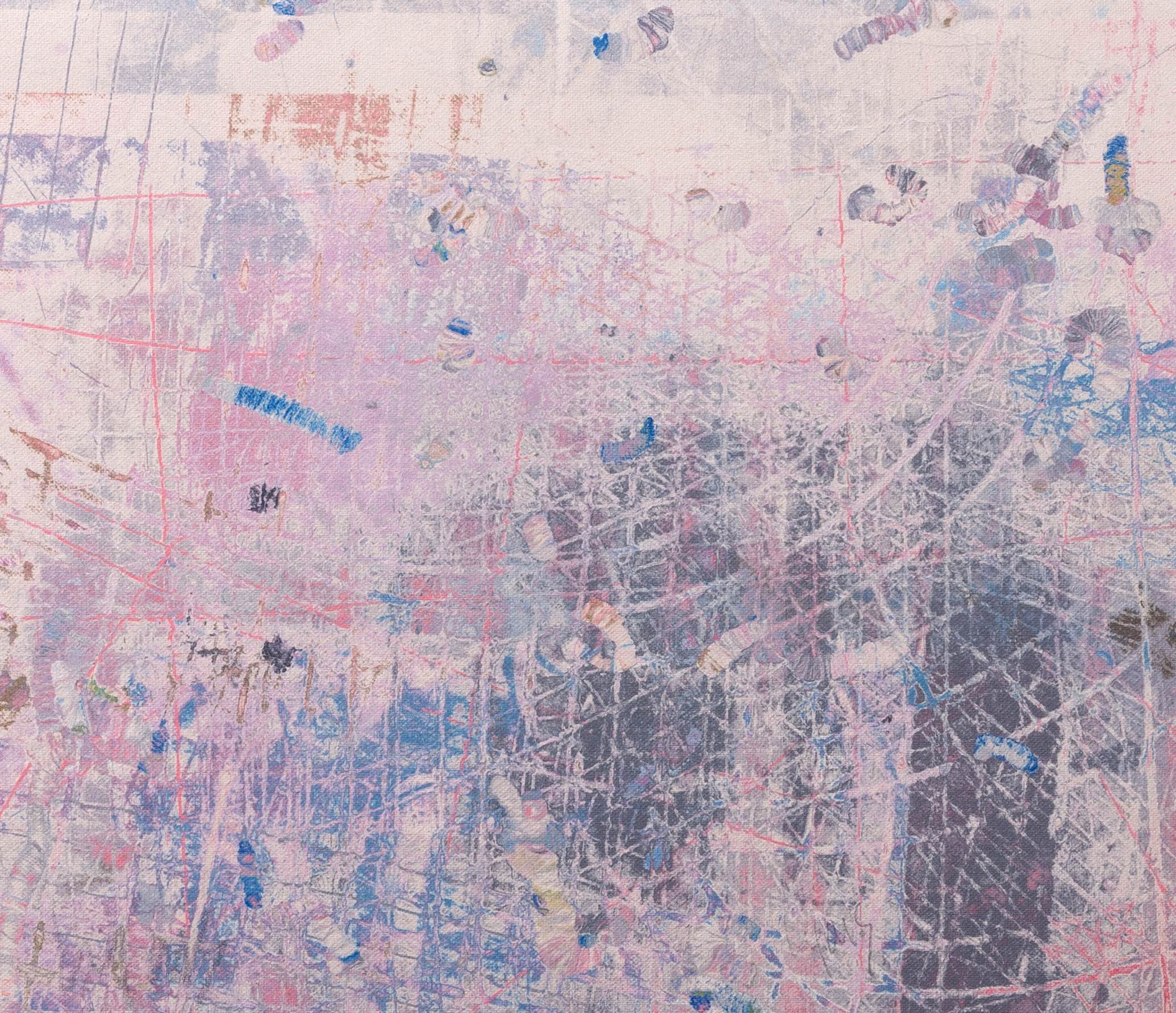 Mitch Lyons, "#45," monotype and clay.
Mitch Lyons, "#45," monotype and clay.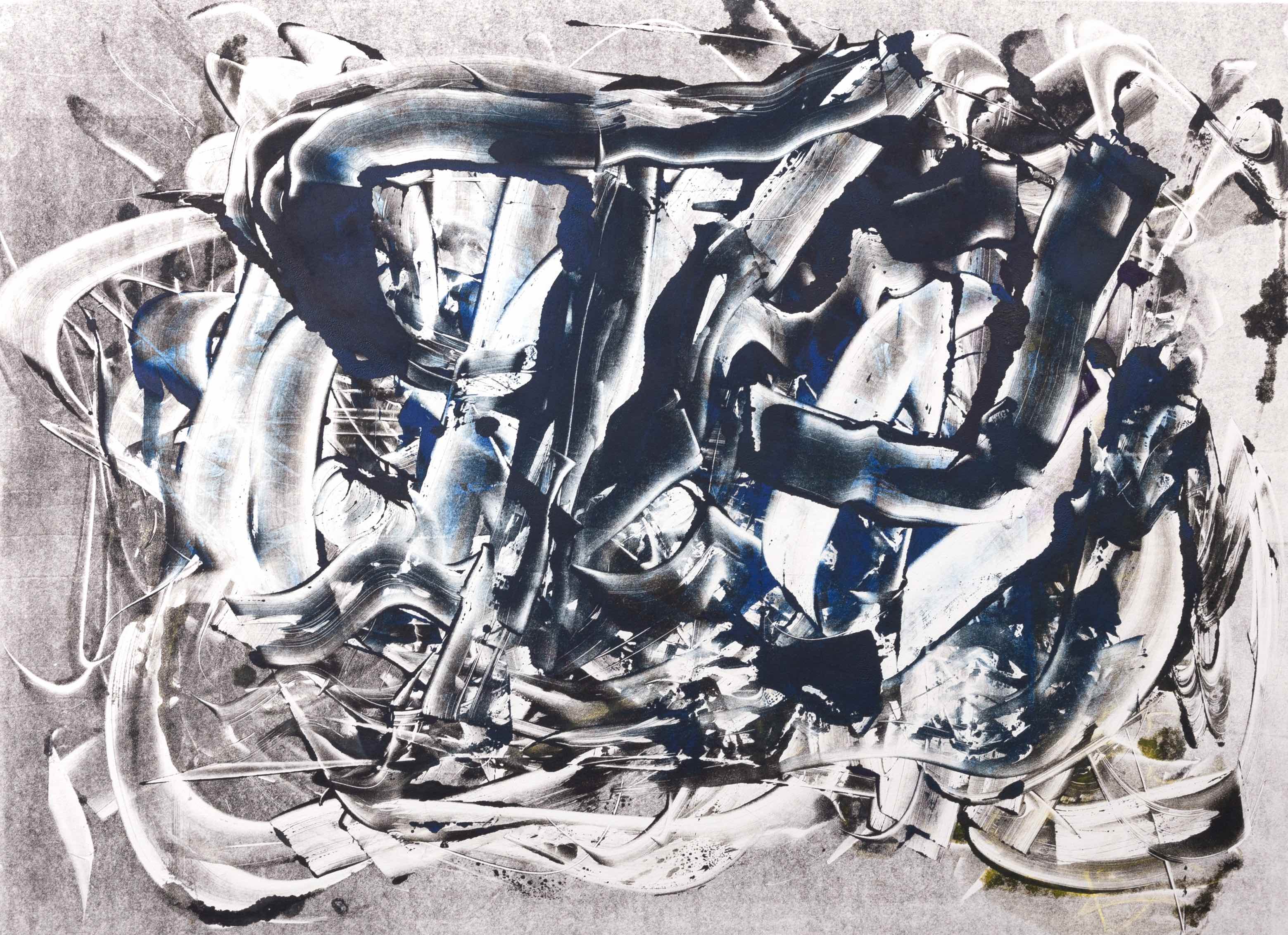 Luke Pedemonte, [Untitled], monotype, 1999.
Luke Pedemonte, [Untitled], monotype, 1999.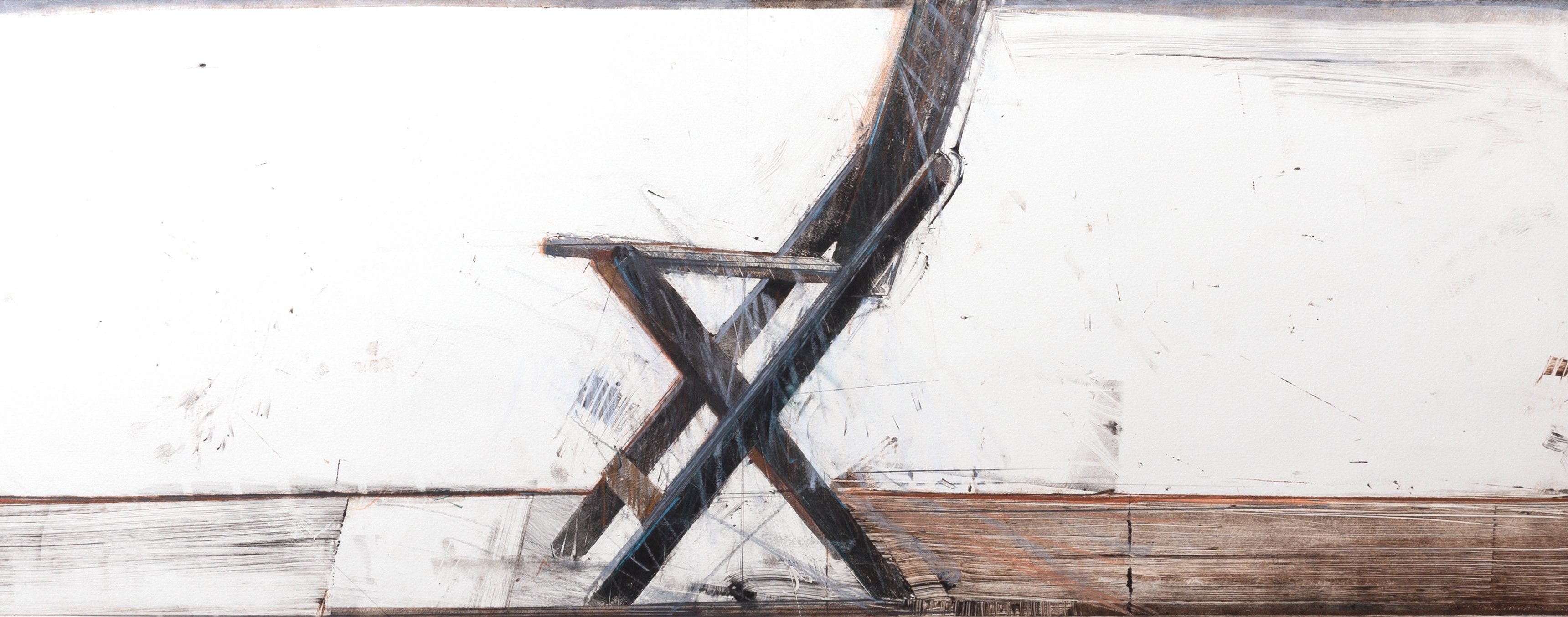 Paul J. Harcharik, "#64 (fr. Chair Series)," monotype.
Paul J. Harcharik, "#64 (fr. Chair Series)," monotype.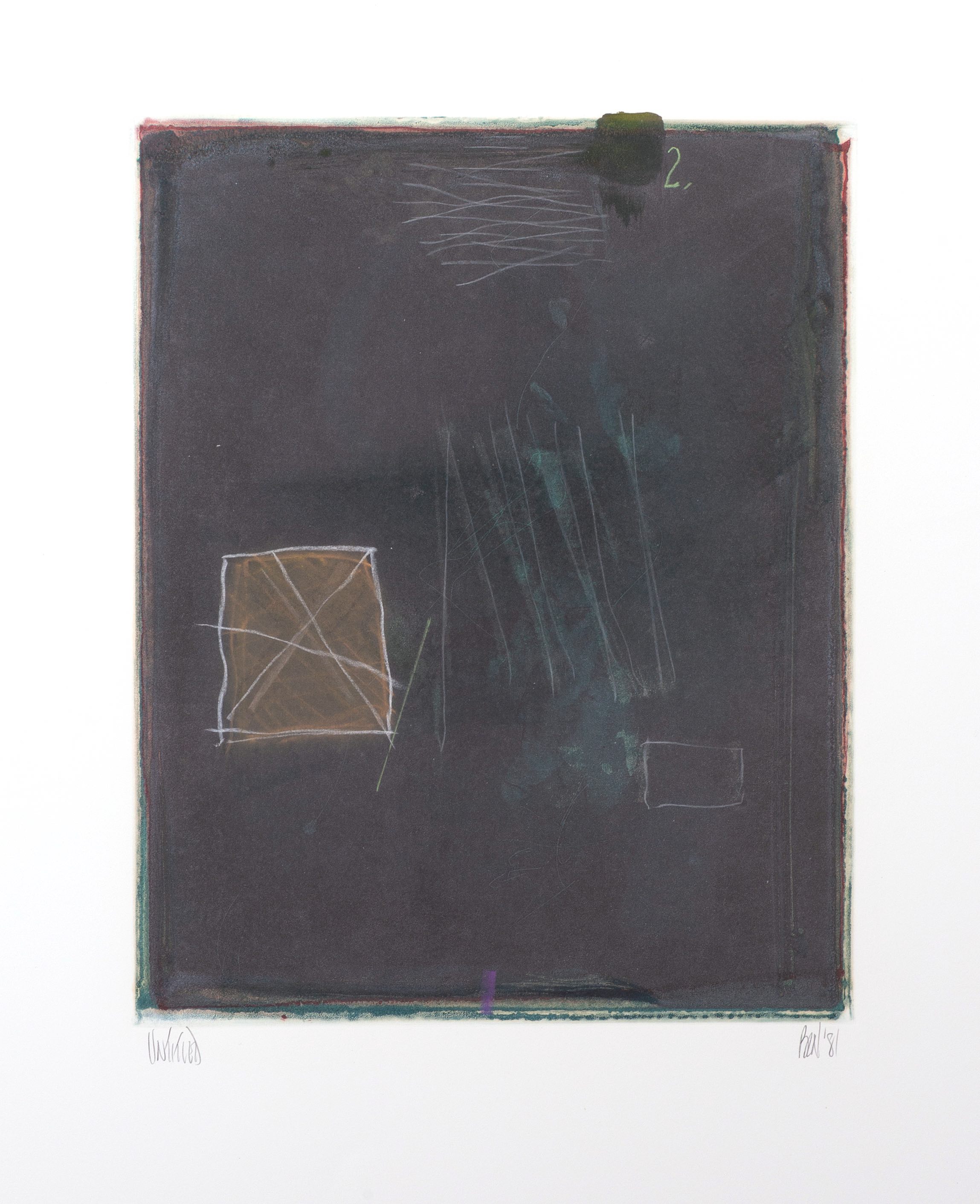 Bob Nugent, [Untitled], monoprint and pastel, 1981.
Bob Nugent, [Untitled], monoprint and pastel, 1981.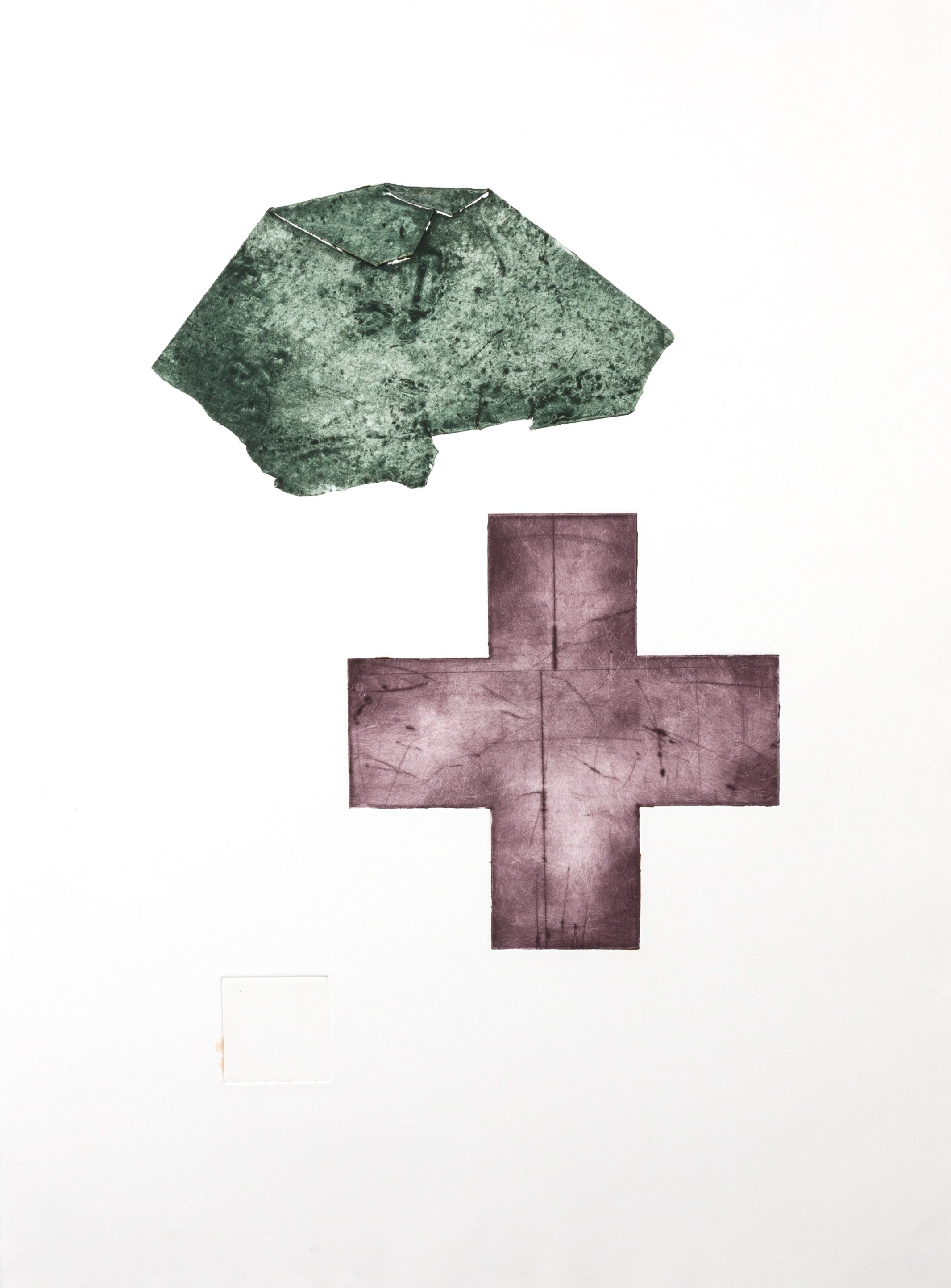 Mark Kloth, [Untitled], monoprint.
Mark Kloth, [Untitled], monoprint.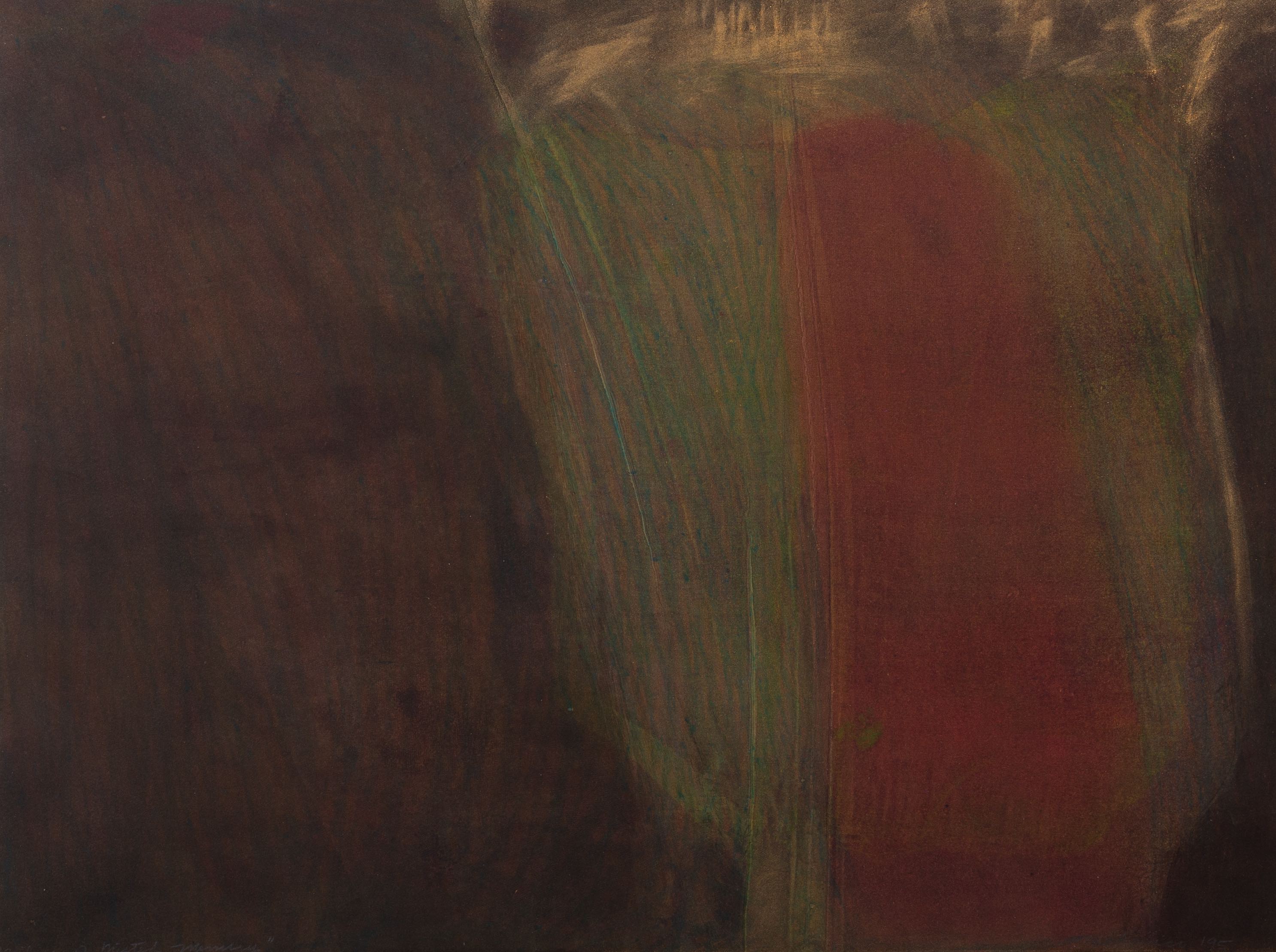 Pauletta M. Chanco, "Veilings of Misted Memory," monoprint, 1995.
Pauletta M. Chanco, "Veilings of Misted Memory," monoprint, 1995.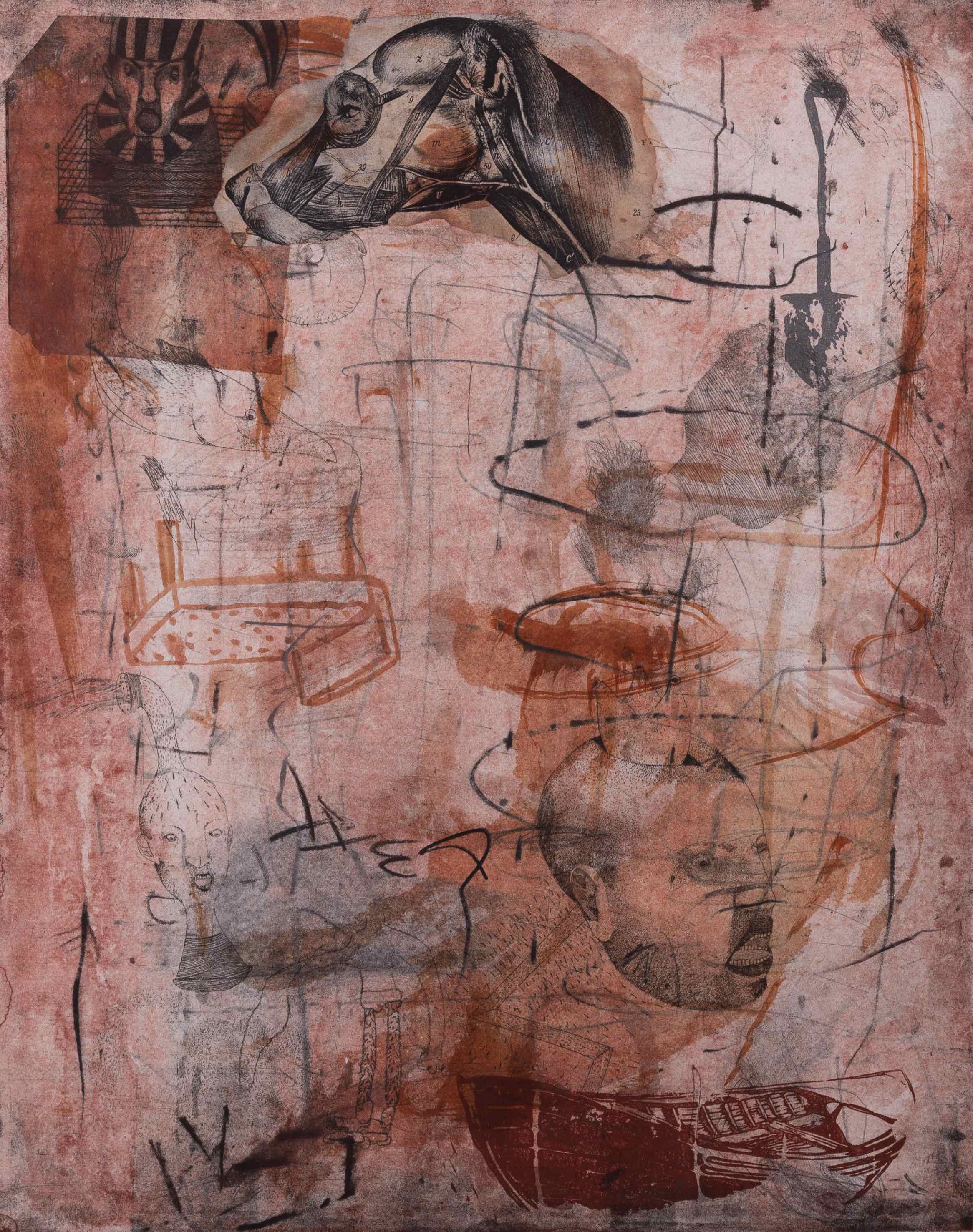 Kurt Kemp and Mark Perlman, [Untitled], monoprint/intaglio/chine collé, 1996.
Kurt Kemp and Mark Perlman, [Untitled], monoprint/intaglio/chine collé, 1996.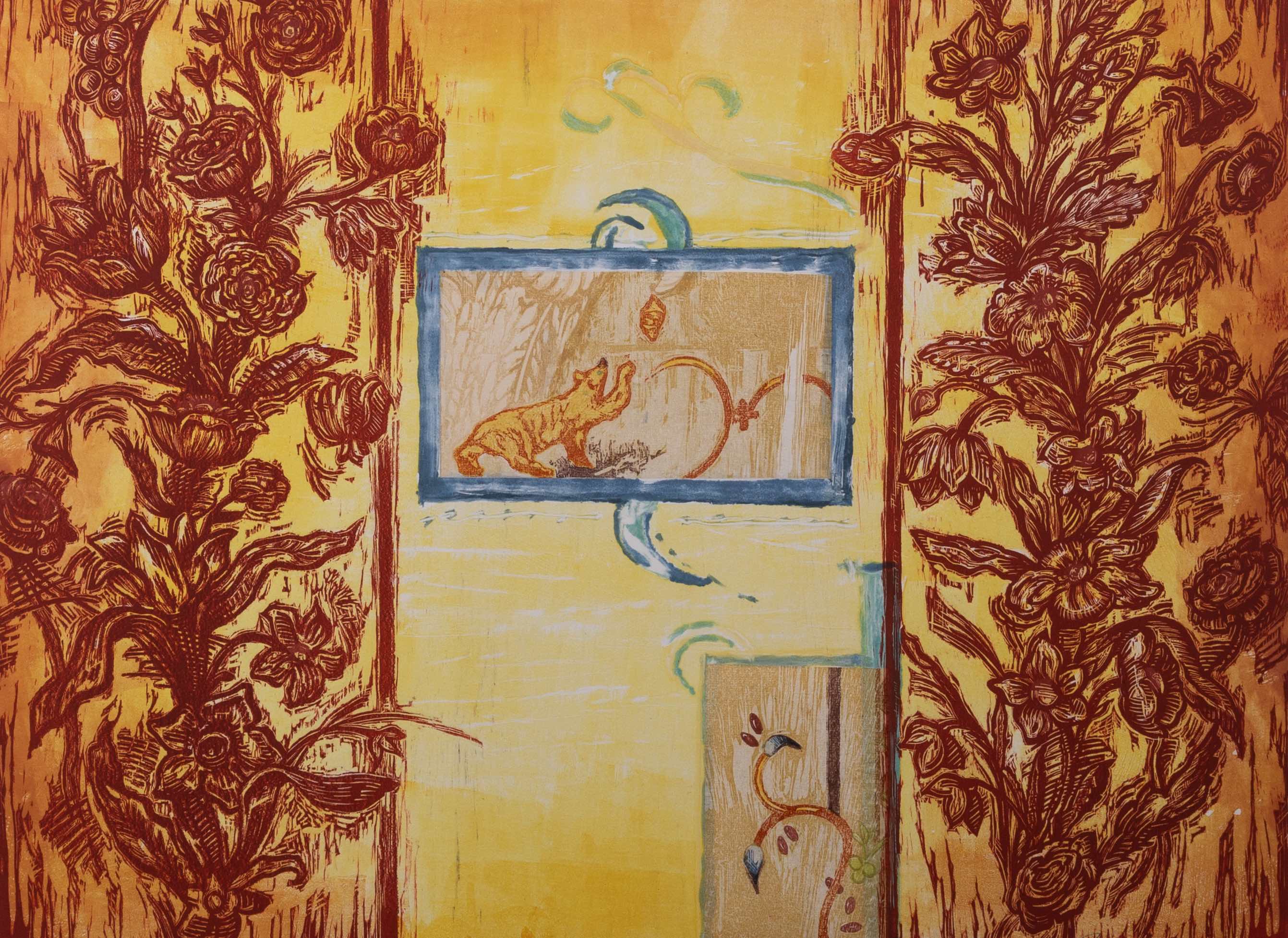 Sylvia Solochek Walters, [Untitled], monoprint, 2002.
Sylvia Solochek Walters, [Untitled], monoprint, 2002.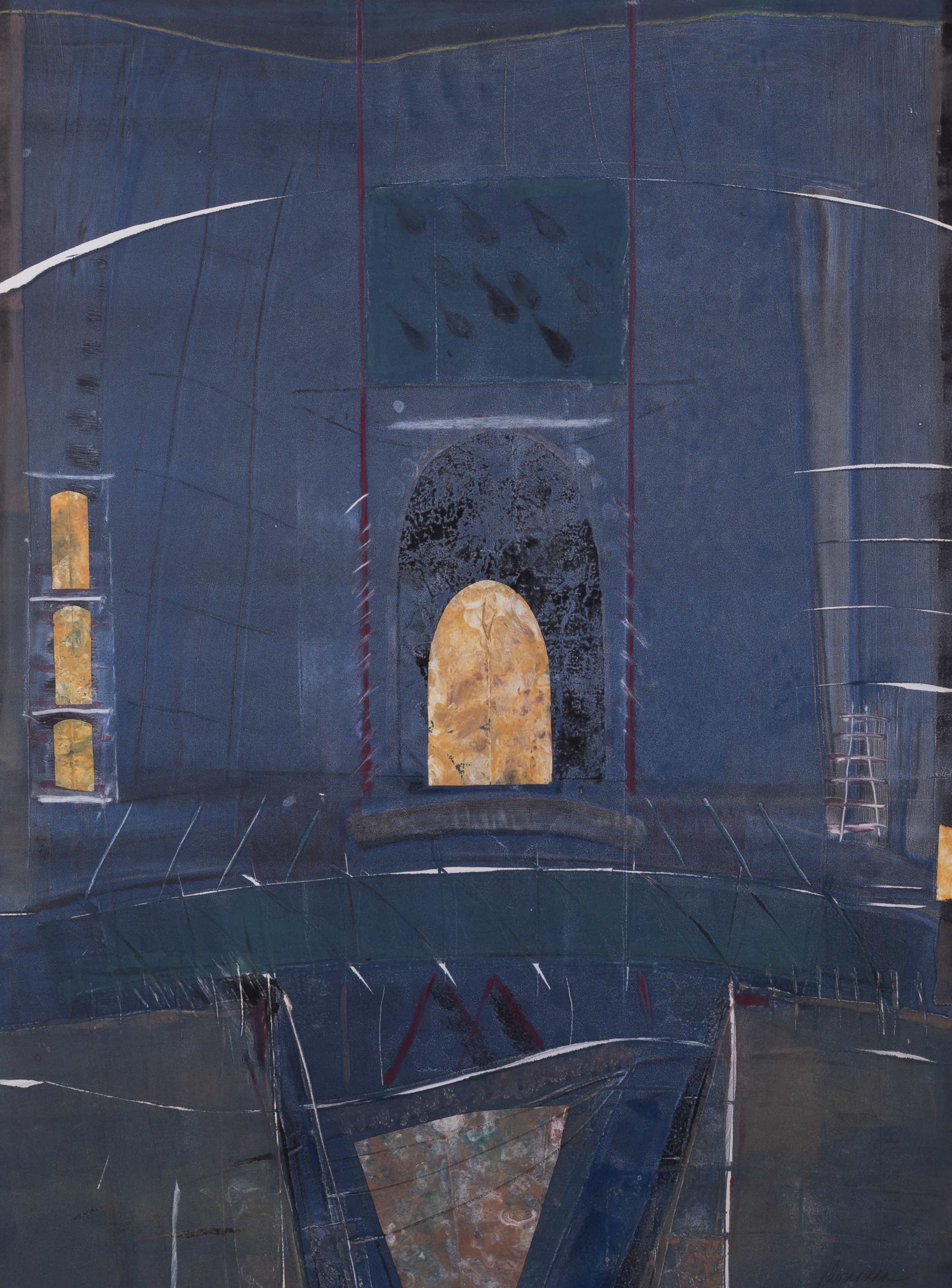 Marilyn Donovan, "Washington Square," monotype and viscosity, 1991.
Marilyn Donovan, "Washington Square," monotype and viscosity, 1991.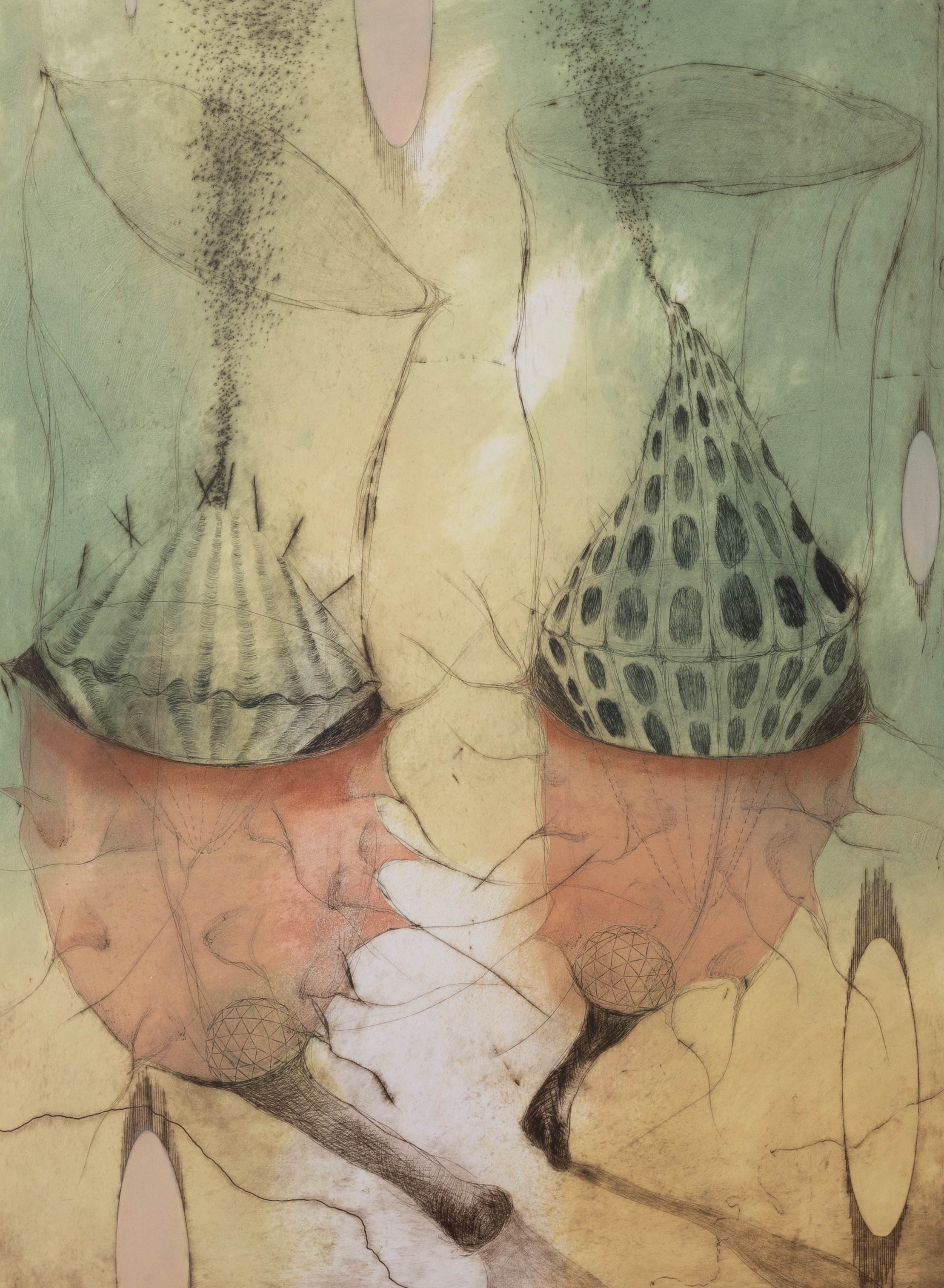 Heather Neal Kasvinsky, [Untitled], monoprint, 2006.
Heather Neal Kasvinsky, [Untitled], monoprint, 2006.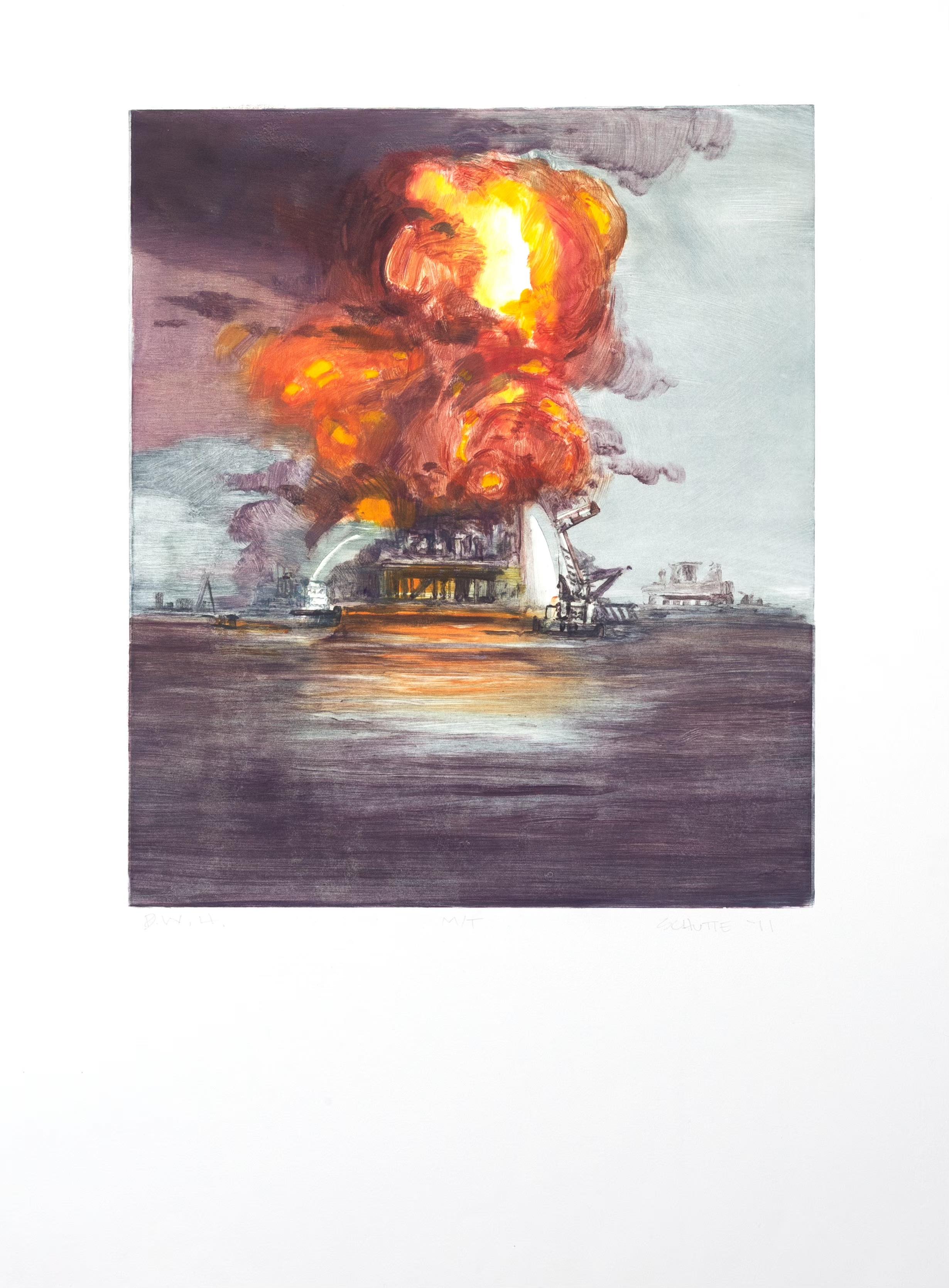
25th Juried Turner Student Print Exhibition and 18th Ink/clay
May, 2021 (postponed from 2020)
This annual Juried Student Print Exhibition showcases outstanding student work in printmaking, complemented by corresponding works of excellence in ceramics.
Awards Ceremony for student exhibitions sponsored by Janet Turner Print Museum, Jacki Headley University Art Gallery and Department of Art and Art History’s Art Education area. All galleries open for receptions following the presentation.
Juror Talk
April 15, 5:00.
Awards Ceremony
May 5, 6:00.
Juror: Kimiko Miyoshi
Kimiko Miyoshi’s printmaking experience began as a collaborative silkscreen printer in Japan. She was also involved in reproduction of vintage Ukiyo-E woodcuts as a Kira printer. Miyoshi has taught printmaking workshops and has collaborated with artists by creating print editions in in Los Angeles and New York. After receiving her MFA in Printmaking from the University of New Mexico, she built scientific exhibitions for a children’s science museum, in Albuquerque, NM. The work had a great effect on her creative practice. The focus of Miyoshi’s work is transforming insignificant objects or mundane phenomena into seductive works of art. Miyoshi is currently Professor of Art at California State University, Longbeach.
Juror: Sienna Orlando-Lalaguna
I was raised on a family farm in Northern California, where I spent my time crawling through weeds, walking in the mud, and watching fruit grow. My path into the ceramic world began in 1999 with an emphasis on pottery, and was punctuated by several years in the culinary field, and the study of organic gardening. I later returned to school and received my BFA in Ceramics in 2008 from CSU, Chico, followed by residencies in Maine and Mendocino, CA. Today, I am a mother of two small children, the sole-owner and maker behind Sienna Ceramics, and the founder of Strega Studios in Chico, CA. I design and create a line of home goods for farm-to-table living and the appreciation of food, as well as whimsical sculpture inspired by the natural world, native species, and a deep connection to plants.


